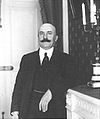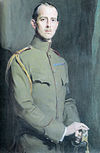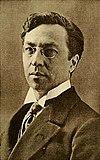| Millennium: | 2nd millennium |
|---|---|
| Centuries: | |
| Decades: | |
| Years: |
|
| Gregorian calendar | 1944 MCMXLIV |
| Ab urbe condita | 2697 |
| Armenian calendar | 1393 ԹՎ ՌՅՂԳ |
| Assyrian calendar | 6694 |
| Bahá'í calendar | 100–101 |
| Balinese saka calendar | 1865–1866 |
| Bengali calendar | 1351 |
| Berber calendar | 2894 |
| British Regnal year | 8 Geo. 6 – 9 Geo. 6 |
| Buddhist calendar | 2488 |
| Burmese calendar | 1306 |
| Byzantine calendar | 7452–7453 |
| Chinese calendar | 癸未年 (Water Goat) 4640 or 4580 — to — 甲申年 (Wood Monkey) 4641 or 4581 |
| Coptic calendar | 1660–1661 |
| Discordian calendar | 3110 |
| Ethiopian calendar | 1936–1937 |
| Hebrew calendar | 5704–5705 |
| Hindu calendars | |
| - Vikram Samvat | 2000–2001 |
| - Shaka Samvat | 1865–1866 |
| - Kali Yuga | 5044–5045 |
| Holocene calendar | 11944 |
| Igbo calendar | 944–945 |
| Iranian calendar | 1322–1323 |
| Islamic calendar | 1363–1364 |
| Japanese calendar | Shōwa 19 (昭和19年) |
| Javanese calendar | 1874–1875 |
| Juche calendar | 33 |
| Julian calendar | Gregorian minus 13 days |
| Korean calendar | 4277 |
| Minguo calendar | ROC 33 民國33年 |
| Nanakshahi calendar | 476 |
| Thai solar calendar | 2487 |
| Tibetan calendar | 阴水羊年 (female Water-Goat) 2070 or 1689 or 917 — to — 阳木猴年 (male Wood-Monkey) 2071 or 1690 or 918 |
1944 (MCMXLIV) was a leap year starting on Saturday of the Gregorian calendar, the 1944th year of the Common Era (CE) and Anno Domini (AD) designations, the 944th year of the 2nd millennium, the 44th year of the 20th century, and the 5th year of the 1940s decade.
Events
Below, the events of World War II have the "WWII" prefix.
January
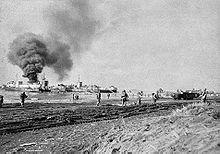
US Army troops landing at Anzio during Operation Shingle, late January 1944.
- January 2 – WWII:
- Free French General Jean de Lattre de Tassigny is appointed to command French Army B, part of the Sixth United States Army Group in North Africa.
- Landing at Saidor: 13,000 US and Australian troops land on Papua New Guinea, in an attempt to cut off a Japanese retreat.
- January 8 – WWII: Philippine Commonwealth troops enter the province of Ilocos Sur in northern Luzon, and attack Japanese forces.
- January 11
- President of the United States Franklin D. Roosevelt proposes a Second Bill of Rights for social and economic security, in his State of the Union address.
- The Nazi German administration expands Kraków-Płaszów concentration camp into the larger standalone Konzentrationslager Plaszow bei Krakau.
- January 12 – WWII: Winston Churchill and Charles de Gaulle begin a 2-day conference in Marrakech.
- January 14 – WWII: Soviet troops start the offensive at Leningrad and Novgorod.
- January 15
- WWII: The 27th Polish Home Army Infantry Division is re-created, marking the start of Operation Tempest by the Polish Home Army.
- 1944 San Juan earthquake: An earthquake hits San Juan, Argentina, killing an estimated 10,000 people, in the worst natural disaster in Argentina's history.
- January 17 – WWII:
- The Battle of Monte Cassino begins in Italy. British forces cross the Garigliano River. U.S. Fifth Army troops, commanded by Lieutenant-General Mark W. Clark, arrive at the Garigliano, to begin their attack against the Gustav Line south of Rome. The French Expeditionary Corps, under command of General Alphonse Juin, moves into the mountains north of Monte Cassino.[1]
- The Soviet Union ceases production of the Mosin–Nagant 1891/30 sniper rifle.
- Meat rationing ends in Australia.
- January 20 – WWII:
- The Royal Air Force drops 2,300 tons of bombs on Berlin.
- The United States 36th Infantry Division in Italy attempts to cross the Rapido River.
- January 22 – WWII: Operation Shingle: The Allies begin the assault on Anzio, Italy. The U.S. 45th Infantry Division stand their ground at Anzio against violent assaults for four months.
- January 25 – A total solar eclipse is visible in Pacific Ocean, South America, Atlantic Ocean and Africa, the 48th solar eclipse of Solar Saros 130.
- January 27 - WWII:
- The two-year Siege of Leningrad is lifted.
- Light cruiser HMS Spartan is sunk by a Henschel Hs 293 guided missile, from a German aircraft off Anzio, western Italy, with the loss of 46 men.
- January 29 – WWII: Koniuchy massacre – A unit of Soviet partisans accompanied by Jewish partisans kills at least 38 civilians in the village of Koniuchy in Nazi occupied Lithuania.
- January 30 – WWII:
- The Battle of Cisterna opens, as United States Army Rangers attempt to break out of the Anzio beachhead.
- United States troops invade Majuro, Marshall Islands.
- January 31 – WWII: Battle of Kwajalein: American forces land on Kwajalein Atoll and other islands, in the Japanese-held Marshall Islands.
February
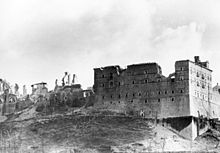
The Abbey of Monte Cassino in ruins after being destroyed by Allied bombing, February 1944.
- The Zadran tribe rises up against the Afghan government, starting the Afghan tribal revolts of 1944–1947.[2]
- February 1 – WWII: Pacific War - United States troops land in the Marshall Islands.
- February 2 – The first issue of Human Events is published in Washington, D.C.
- February 3 – WWII: United States troops capture the Marshall Islands.
- February 7 – WWII: At Anzio, German forces launch a counteroffensive.
- February 8 – WWII:
- 2,765 drown when USS Snook torpedoes Lima Maru.[3]
- 2,670 drown when HMS Sportsman torpedoes Petrella.[4]
- February 14 – WWII: An anti-Japanese revolt breaks out on Java.
- February 15 – WWII – Battle of Monte Cassino: The monastery atop Monte Cassino is destroyed by Allied bombing.
- February 17 – WWII: Pacific War – The Battle of Eniwetok begins, when U.S. forces invade the atoll in the Marshall Islands.
- February 18 – WWII: Light cruiser HMS Penelope is torpedoed and sunk by U-410; 417 of her crew, including the captain, go down with the ship; 206 survive.
- February 20 – WWII:
- The "Big Week" begins, with American bomber raids on German aircraft manufacturing centers.
- The United States takes Eniwetok Atoll.
- February 22 – The United States Strategic Air Forces in Europe is organized from the Eighth Air Force's strategic planning staff, subsuming strategic planning for all US Army Air Forces in Europe and Africa.
- February 23 – WWII:
- The Chechen and Ingush are forcibly deported to Central Asia.
- The Battle of Eniwetok concludes, when U.S. forces secure the last islands in the Eniwetok Atoll.
- February 24 – WWII: USS Rasher torpedoes Ryūsei Maru and Tango Maru; 7,998 drown.[5]
- February 26
- Kurt Gerron begins shooting the Nazi propaganda film, Theresienstadt in Theresienstadt concentration camp. He and many others who are featured in it are transferred to Auschwitz, and gassed upon the film's completion.
- Sue S. Dauser becomes the first woman appointed to the substantive rank of captain, in the United States Navy Nurse Corps.
- February 29 – WWII: Pacific War – The Admiralty Islands campaign (Operation Brewer) opens, when U.S. forces land on Los Negros Island in the Admiralty Islands.
March
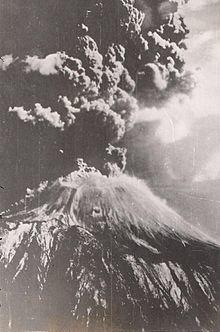
The March 1944 eruption of Mount Vesuvius.
- March – Austrian-born economist Friedrich Hayek publishes his book The Road to Serfdom in London.
- March 1 – WWII:
- March 2
- Balvano train disaster: A train stalls inside a railway tunnel outside Salerno, Italy; 521 choke to death.
- The 16th Academy Awards Ceremony is held, the first Oscar ceremony held at a large public venue, Grauman's Chinese Theatre in Hollywood. Casablanca, (directed by Michael Curtiz), wins the Best Picture Award.
- March 3 – WWII: The Order of Nakhimov and the Order of Ushakov are instituted in the USSR.
- March 4 – In Ossining, New York, Louis Buchalter, the leader of 1930s crime syndicate Murder, Inc., is executed at Sing Sing, along with Emanuel Weiss and Louis Capone.
- March 6 – WWII: Soviet Army planes attack Narva, Estonia, destroying almost the entire baroque old town.
- March 9 – WWII: Soviet Army planes attack Tallinn, Estonia, killing 757 and leaving 25,000 homeless.
- March 10
- In Britain, the prohibition on married women working as teachers is lifted.[7]
- Resistance leader Joop Westerweel is arrested while returning to the Netherlands, having escorted a group of Jewish children to safety in Spain.
- March 12 – WWII: The Political Committee of National Liberation is created in Greece.
- March 15
- WWII: Battle of Monte Cassino: Allied aircraft bomb the monastery, and an assault is staged.
- WWII: The National Council of the French Resistance approves the Resistance programme.
- The Soviet Union introduces a new anthem, replacing The Internationale.
- In Sweden, the 1864 law which had criminalized homosexuality is abolished.
- March 18
- The last eruption of Mount Vesuvius in Italy kills 26, and causes thousands to flee their homes.
- WWII: The Nazis execute almost 400 prisoners, Soviet citizens and anti-fascist Romanians at Rîbnița.
- March 19 - WWII: Operation Margarethe: German forces occupy Hungary.
- March 20 - WWII:
- Landing on Emirau: 4,000 United States Marines land on Emirau Island in the Bismarck Archipelago to develop an airbase, as part of Operation Cartwheel.
- British Royal Air Force Flight Sergeant Nicholas Alkemade's bomber is hit over Germany, and he has to bail out without a parachute from a height of over 4,000 meters (13,123 ft). Tree branches interrupt his fall and he lands safely on deep snow.
- March 23 – WWII: Members of the Italian Resistance attack Nazis marching in Via Rasella, killing 33.
- March 24 – WWII:
- Ardeatine massacre: In Rome, 335 Italians are killed, including 75 Jews and over 200 members of the Italian Resistance from various groups.
- In Markowa, Poland, German police kill Józef and Wiktoria Ulm, their 6 children and 8 Jews they were hiding.
- The "Great Escape": 76 Royal Air Force prisoners of war escape by tunnel "Harry" from Stalag Luft III this night. Only 3 men (2 Norwegians and a Dutchman) return to the UK; of those recaptured, 50 are summarily executed soon afterwards, in the Stalag Luft III murders.
April
- April 2 – WWII: Ascq massacre: Members of the 12th SS Panzer Division Hitlerjugend shoot 85 civilians suspected of blowing up their train, on its approach to the Gare d'Ascq in France.
- April 4 – WWII: An Allied photoreconnaissance aircraft of 60 Squadron SAAF photographs part of Auschwitz concentration camp.
- April 10 – The Holocaust: Rudolf Vrba and Alfréd Wetzler escape from Auschwitz concentration camp; on April 25–27 they prepare the Vrba–Wetzler report, one of the earliest and most detailed descriptions of the extermination of Jews in the camp.
- April 14 – Bombay Explosion: Freighter SS Fort Stikine, carrying a mixed cargo of ammunition, cotton bales and gold, explodes in harbour at Bombay (India), sinking surrounding ships and killing around 800 people.
- April 15 – Italian fascist philosopher Giovanni Gentile is assassinated in Florence by Bruno Fanciullacci, a member of the partisan group GAP.
- April 16 – WWII: Allied forces start bombing Belgrade, killing about 1,100 people. This bombing fell on the Orthodox Christian Easter.
- April 19 – WWII:
- The Japanese launch the Operation Ichi-Go offensive in central and south China.
- American and British planes bomb the city of Rouen (semaine rouge).[8]
- April 25
- The Holocaust: SS-Obersturmbannführer Adolf Eichmann opens "blood for goods" negotiations with Joel Brand, to offer the release of thousands of Jews from eastern Europe to the Hungarian Aid and Rescue Committee, in exchange for supplies for the German Eastern Front.
- The United Negro College Fund is incorporated in the United States.
- April 26
- April 28 – WWII: Allied convoy T4, forming part of amphibious Exercise Tiger (a full-scale rehearsal for the Normandy landings) in Start Bay, off the Devon coast of England, is attacked by E-boats, resulting in the deaths of 749 American servicemen from LSTs.[10][11][12][13]
May
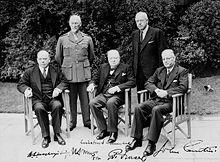
The prime ministers of Britain and the four major dominions at the 1944 Commonwealth Prime Ministers' Conference, May 1, 1944.
- May – Jean-Paul Sartre's existentialist drama No Exit (Huis Clos) premières in Nazi-occupied Paris.
- May 1 – WWII: Two hundred Communist prisoners are shot by the Germans at Kaisariani, Athens, Greece, in reprisal for the killing of General Franz Krech by Partisans at Molaoi.
- May 5 – WWII: Mohandas Gandhi is released from jail in India, on health grounds.
- May 9 – WWII: In the Ukrainian city of Sevastopol, Soviet troops completely drive out German forces, who had been ordered by Hitler to “fight to the last man.”[14]
- May 12 – WWII: Soviet troops finalize the liberation of the Crimea.
- May 14 – The Holocaust: Predominantly Muslim Albanian troops of the 21st Waffen Mountain Division of the SS Skanderbeg (1st Albanian) round up 281 Jews in Pristina, and hand them over to the Germans for transportation to Bergen-Belsen concentration camp.
- May 15–July 8 – The Holocaust: Hungarian Jews are deported to Auschwitz, and other Nazi concentration camps.
- May 18 – WWII:
- Battle of Monte Cassino: The Germans evacuate Monte Cassino, and Allied forces, led by Władysław Anders from Polish II Corps, take the stronghold after a struggle that has claimed 20,000 lives.
- Crimean Tatars are deported by the Soviet Union.
- May 24 – WWII: West Loch disaster: Six LSTs are accidentally destroyed and 163 men killed, in Pearl Harbor.
- May 30 – Princess Charlotte Louise Juliette Louvet Grimaldi of Monaco, heir to the throne, resigns in favor of her son Prince Rainier Louis Henri Maxence Bertrand Grimaldi, who later reigns as Prince Rainier III of Monaco.
- May 31 – WWII: Destroyer escort USS England sinks the sixth Japanese submarine in two weeks. This anti-submarine warfare performance remains unmatched through the 20th-century.
June
.jpg)
LVTs heading for shore on June 15, 1944 during the Battle of Saipan.
- June 1
- WWII: The BBC transmits coded messages (including the first line of the poem "Chanson d'automne" by Paul Verlaine) to the French Resistance, signalling to them that the invasion of Europe was imminent.
- Two K-class blimps of the United States Navy complete the first transatlantic crossing by non-rigid airships, from the U.S. to French Morocco, with two stops.[15]
- June 2 – WWII: The Provisional Government of the French Republic is established.
- June 3 – Hans Asperger publishes his paper on Asperger syndrome.[16][17]
- June 4 – WWII:
- Rome falls to the Allies, the first Axis capital to fall.
- A hunter-killer group of the United States Navy captures the German submarine U-505, marking the first time a U.S. Navy vessel has captured an enemy vessel at sea since the War of 1812. Some significant intelligence data is acquired.
- June 5 – WWII:
- The German navy's Enigma messages are decoded almost in real time.
- British Group Captain James Stagg correctly forecasts a brief improvement in weather conditions over the English Channel, which will permit the following day's Normandy landings to take place (having been deferred from today due to unfavourable weather).
- At 10:15 p.m. local time, the BBC transmits coded messages including the second line of the Paul Verlaine poem "Chanson d'automne" to the French Resistance, indicating that the invasion of Europe is about to begin.[18][19]
- More than 1,000 British bombers drop 5,000 tons of bombs on German gun batteries on the Normandy coast, in preparation for D-Day.
- US and British airborne divisions drop into Normandy, in preparation for D-Day.
- D-Day naval deceptions are launched.
- June 6 – WWII: D-Day: 155,000 Allied troops shipped from England land on the beaches of Normandy in northern France, beginning Operation Overlord and the Invasion of Normandy. The Allied soldiers quickly break through the Atlantic Wall and push inland, in the largest amphibious military operation in history. This operation helps liberate France from Germany, and also weakens the Nazi hold on Europe.
- June 7 – WWII:
- The steamer Danae (Greek: Δανάη), carrying 600 Cretans (including 350 Greek Jews) on the first leg of the journey to Auschwitz, is sunk, with no known survivors, off Santorini.
- Joel Brand is intercepted by British agents in Aleppo.
- Bayeux is liberated by British troops.
- Operation Perch, a British attempt to capture Caen from the Germans, commences; it is abandoned on June 14.
- June 9 – WWII: Soviet leader Joseph Stalin launches the Vyborg–Petrozavodsk Offensive against Finland, with the intent of defeating Finland before pushing for Berlin.
- June 10 – WWII: Oradour-sur-Glane massacre: 642 men, women and children are killed in France.
- June 13 – WWII: Germany launches the first V-1 flying bomb attack on London.[20]
- June 15 – WWII: Battle of Saipan: United States forces land on Saipan.
- June 16 – At age 14, George Stinney becomes the youngest person ever executed in the United States.
- June 17 – Iceland declares full independence from Denmark.
- June 19 – A severe storm badly damages the Mulberry harbours on the Normandy coast.
- June 20 – WWII: A V-2 rocket becomes the first man-made object to cross the Kármán line and reach the edge of space.[21]
- June 22 – WWII:
- Operation Bagration: A general attack by Soviet forces clears the German forces from Belarus, resulting in the destruction of German Army Group Centre, possibly the greatest defeat of the Wehrmacht during WWII.
- Burma Campaign: The Battle of Kohima ends in a British victory.
- June 23 – The Holocaust: Maurice Rossel of the International Committee of the Red Cross visits Theresienstadt concentration camp, uncritically accepting the propaganda view of it presented by the Schutzstaffel.
- June 25 – WWII:
- Battle of Tali-Ihantala (the largest battle ever in the Nordic countries): Finland is able to resist the Soviet attack, and thus manages to remain an independent nation.
- Cherbourg is bombarded by ships of the United States Navy and British Royal Navy, in support of U.S. ground troops.
- June 26 – WWII: American troops enter Cherbourg.
- June 29 – WWII: USS Sturgeon torpedoes Toyama Maru; 5,400 drown.[4]
- June 30 – WWII: USS Tang torpedoes Nikkin Maru; 3,219 drown.[22]
July
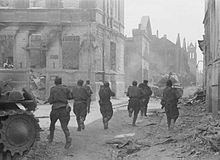
Soviet soldiers fight in the streets of Jelgava, summer 1944.
- July–October – WWII: Germans are driven out of Lithuania leading to reimposition of the Lithuanian Soviet Socialist Republic.
- July 1 – The United Nations Monetary and Financial Conference begins at Bretton Woods, New Hampshire, United States.
- July 3 – WWII:
- Soviet troops liberate Minsk.
- Battle of Imphal: Japanese forces call off their advance, ending the battle with a British victory.
- July 6
- Hartford circus fire: More than 100 children die in one of the worst fire disasters in the history of the United States.
- WWII: At Camp Hood, Texas, future baseball star and 1st Lt. Jackie Robinson is arrested and later court-martialed, for refusing to move to the back of a segregated U.S. Army bus (he is eventually acquitted).
- July 9 – WWII: British and Canadian forces capture Caen.
- July 10 – WWII: Soviet troops begin operations to liberate the Baltic countries.
- July 12–21 – WWII: Dortan massacre – 35–36 French civilians are killed by Ostlegionen (Cossacks) serving with the Wehrmacht.
- July 13 – WWII: Vilnius is freed by Soviet forces.
- July 16 – WWII: The first contingent of the Brazilian Expeditionary Force arrives in Italy.
- July 17 – WWII:
- The largest convoy of the war embarks from Halifax Harbour, Nova Scotia, under Royal Canadian Navy protection.
- Port Chicago disaster: The SS E. A. Bryan, loaded with ammunition, explodes at the Port Chicago, California, Naval Magazine, killing 320 sailors and civilian personnel.
- July 18 – WWII:
- American forces push back the Germans in Saint-Lô, capturing the city.
- British forces launch Operation Goodwood, an armoured offensive aimed at driving the Germans from the high ground to the south of Caen. The offensive ends 2 days later with minimal gains.
- Hideki Tōjō resigns as Prime Minister of Japan due to numerous setbacks in the war effort and is succeeded on July 22 by Kuniaki Koiso.
- July 20
- WWII: Adolf Hitler survives the 20 July plot to assassinate him led by Claus von Stauffenberg; he and his fellow conspirators in this and Operation Valkyrie are executed the following day.
- The annular solar eclipse of July 20, 1944 is visible in Africa, Indian Ocean, Asia, Pacific Ocean and Australia, and is the 35th solar eclipse of Solar Saros 135.
- July 21 – WWII:
- Battle of Guam: American troops land on Guam (the battle ends August 10).
- The Soviet-sponsored Polish Committee of National Liberation is created, in opposition to the Polish government-in-exile.
- July 22
- The Bretton Woods Conference ends with agreements signed to set up the International Bank for Reconstruction and Development, General Agreement on Tariffs and Trade and International Monetary Fund.
- The new Polish Committee of National Liberation publishes the PKWN Manifesto in Chełm, calling for a continuation of fighting against Nazi Germany, radical reforms including nationalisation of industry, and a "decent border in the West" (the Oder–Neisse line).
- United States v. Masaaki Kuwabara,[23] the only Japanese American draft avoidance case to be dismissed on a due process violation of the U.S. Constitution.
- July 25
- WWII – Operation Spring: One of the bloodiest days for Canadian forces during the war results in 1,550 casualties, including 450 killed, during the Normandy Campaign.
- WWII – The Battle of Tannenberg Line (or the "Battle of the Blue Hills" in Northeastern Estonia) begins: The Red Army will gain a Pyrrhic victory by August 10.
- July 26 – WWII: A Messerschmitt Me 262 becomes the first jet fighter aircraft to have an operational victory.[24]
- July 31 – WWII: USS Parche torpedoes Yoshino Maru; 2,495 drown.[6]
August
Szare Szeregi Scouts also fought in the Warsaw Uprising.
- August 1 – WWII: The Warsaw Uprising begins.
- August 2 – WWII:
- Turkey ends diplomatic and economic relations with Germany.
- The First Assembly of ASNOM (the Anti-Fascist Assembly for the People's Liberation of Macedonia) is held in the Prohor Pčinjski monastery.
- August 3 – The Education Act in the United Kingdom, promoted by Rab Butler, creates a Tripartite system of education in England, Wales and Northern Ireland.[25]
- August 4 – The Holocaust: A tip from a Dutch informer leads the Gestapo to a sealed-off area in an Amsterdam warehouse, where they find Jewish diarist Anne Frank, her family, and others in hiding. All will die in the Holocaust, except for Otto Frank, Anne's father.[26]
- August 5 – WWII:
- The Warsaw Uprising:
- The Wola massacre begins. Between now and August 12, 40,000 to 50,000 Polish civilians will be indiscriminately massacred by occupying SS troops.
- The Holocaust: Polish insurgents liberate a German labor camp in Warsaw, freeing 348 Jewish prisoners.
- Cowra breakout: Over 500 Japanese prisoners of war attempt a mass breakout from the Cowra camp in Australia. In the ensuing manhunt, 231 Japanese escapees and four Australian soldiers are killed.
- The Warsaw Uprising:
- August 7 – IBM dedicates the first program-controlled calculator, the Automatic Sequence Controlled Calculator (known best as the Harvard Mark I).
- August 9 – The United States Forest Service and the Wartime Advertising Council release the first posters featuring Smokey Bear.
- August 12 – WWII:
- The Allies capture Florence, Italy.
- Operation Pluto: The world's first undersea oil pipeline is laid between England and France.
- August 15 – WWII: Operation Dragoon lands Allies in southern France. The U.S. 45th Infantry Division participates in its fourth assault landing at Sainte-Maxime, spearheading the drive for the Belfort Gap.
- August 18 – WWII: Submarine USS Rasher sinks Teia Maru, Eishin Maru, Teiyu Maru, and aircraft carrier Taiyō from Japanese convoy HI71, in one of the most effective American "wolfpack" attacks of the war.[27]
- August 19 – WWII:
- More than 4,400 Japanese servicemen drown, when USS Spadefish torpedoes Tamatsu Maru.[28]
- An insurrection starts in Paris.
- August 20 – WWII:
- American forces successfully defeat Nazi forces at Chambois, closing the Falaise Pocket.
- 168 captured Allied airmen, including Phil Lamason, accused of being "terror fliers" by the Gestapo, arrive at Buchenwald concentration camp, where they form the KLB Club.
- August 21
- The Dumbarton Oaks Conference (Washington Conversations on International Peace and Security Organization) opens in Washington, D.C.: U.S., British, Chinese, French and Soviet representatives meet to plan the foundation of the United Nations.[20]
- WWII: Operation Tractable concludes, when Canadian troops relieve the Polish and link with the Americans, capturing remaining German forces in the Falaise Pocket, and securing the strategically important French town of Falaise, in the final offensive of the Battle of Normandy.
- August 22 – WWII:
- Tsushima Maru, an unmarked Japanese passenger/cargo ship, is sunk by torpedoes launched by the submarine USS Bowfin off Akuseki-jima, killing 1,484 civilians, including 767 schoolchildren.
- Holocaust of Kedros: German Wehrmacht infantry begin an intimidatory razing operation, killing 164, against the civilian residents of nine villages in the Amari Valley on the occupied Greek island of Crete.
- August 23 – WWII:
- King Michael's Coup: Ion Antonescu, prime minister of Romania, is arrested and a new government established. Romania leaves the war against the Soviet Union, joining the Allies.
- Padule di Fucecchio massacre: At least 174 Italian civilians are killed by members of the 23rd Infantry Division (Wehrmacht).
- August 24 – WWII:
- Liberation of Paris: The Allies enter Paris, successfully completing Operation Overlord.
- Japanese vessels attack and sink the submarine USS Harder off Luzon.
- August 25 – WWII:
- German surrender of Paris: General Dietrich von Choltitz surrenders Paris to the Allies, in defiance of Hitler's orders to destroy it.
- Maillé massacre: 129 civilians (70% women and children) are massacred by the Gestapo at Maillé, Indre-et-Loire.
- Hungary decides to continue the war together with Germany.
- The Red Ball Express convoy system begins operation, supplying tons of materiel to Allied forces in France.
- August 29 – WWII: The Slovak National Uprising against the Axis powers begins.
- August 31 – The Mad Gasser of Mattoon apparently resumes his mysterious attacks in Mattoon, Illinois for two weeks.
September

Waves of paratroopers land in the Netherlands during Operation Market Garden in September 1944.
- September – The Dutch famine ("Hongerwinter") begins, in the occupied northern part of the Netherlands.[29]
- September 1 – WWII: In Bulgaria, the Bagryanov government resigns.
- September 2
- The Holocaust: Diarist Anne Frank and her family are placed on the last transport train from Westerbork to Auschwitz concentration camp, arriving 3 days later.
- ¡Hola! magazine is launched in Barcelona.
- September 3 – WWII: The Allies liberate Brussels.
- September 4 – WWII:
- The British 11th Armoured Division liberates the city of Antwerp, Belgium.
- Finland breaks off relations with Germany.
- September 5
- WWII: The Soviet Union declares war on Bulgaria.
- Belgium, Netherlands and Luxembourg constitute Benelux.
- September 6 – WWII: The Tartu Offensive in Estonia concludes, with Soviet forces capturing Tartu.
- September 7 – WWII:
- The Belgian government in exile returns to Brussels from London.
- Members of Vichy France's collaborationist government are relocated to Germany where an enclave is established for them in Sigmaringen Castle.
- Shin'yō Maru incident: Japanese cargo ship SS Shinyō Maru is torpedoed and sunk in the Sulu Sea by American submarine USS Paddle while carrying 750 American prisoners of war; 688 perish.
- September 8 – WWII:
- September 9 – WWII: The Bulgarian government is overthrown by the Fatherland Front coalition, which establishes a pro-Soviet government.
- September 10 – WWII: Liberation of Luxembourg.
- September 11 – WWII:
- The Laksevåg floating dry dock at Bergen (Norway) is sunk by British X-class submarine X-24.
- An approaching formation of 36 US bombers is engaged by a German fighter squadron (Jagdgeschwader) in the Battle over the Ore Mountains. After the first German attack on the bombers, US Mustangs attack the German squadron in aerial dogfights.
- September 12 – WWII: Allied forces from Operation Overlord (in northern France) and Operation Dragoon (in the south) link up near Dijon.
- September 13 – WWII: The Battle of Meligalas begins, between the Greek Resistance forces of the Greek People's Liberation Army (ELAS) and the collaborationist Security Battalions.
- September 14 – The Great Atlantic hurricane makes landfall in the New York City area.
- September 15 – WWII: The Battle of Peleliu begins in the Pacific.
- September 17 – WWII: Operation Market Garden: Allied airborne landings begin in the Netherlands and Germany.
- September 17–20 – WWII: Italian Campaign – In the Battle of San Marino, British and Empire forces take the occupied neutral republic of San Marino from the German Army.
- September 18 – WWII:
- HMS Tradewind torpedoes Jun'yō Maru; 5,620 drown.[30]
- After German forces declare the evacuation of Estonia the day before, the Estonian national government briefly resumes control of Tallinn before the Soviet advance.
- September 19 – WWII:
- An armistice between Finland and the Soviet Union is signed, ending the Continuation War.
- The Battle of Hürtgen Forest begins, east of the Belgian–German border.
- September 22 – WWII: The Red Army captures Tallinn, Estonia. Prime Minister in Duties of the President of Estonia Jüri Uluots and 80,000 Estonian civilians manage to escape to Sweden and Germany. The evacuees include almost the entire population of the Estonian Swedes. Soviet bombing raids on the evacuating ships sink several, with thousands on board.
- September 24 – WWII: The U.S. 45th Infantry Division takes the strongly defended city of Épinal before crossing the Moselle River and entering the western foothills of the Vosges.
- September 26 – WWII:
- Operation Market Garden ends in an Allied withdrawal.
- On the middle front of the Gothic Line, Brazilian troops control the Serchio valley region after 10 days of fighting.
October
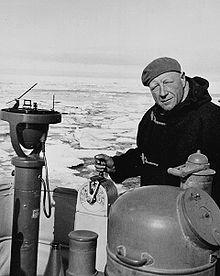
Henry Larsen becomes the first person successfully to navigate the Northwest Passage in both directions, westbound, July–October 1944.

Volkssturm founded in October 1944.
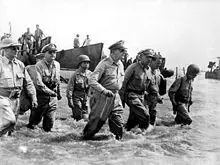
The beginning of the Battle of Leyte, October 20, 1944.
_burning_on_24_October_1944_(80-G-287970).jpg)
Battle of Leyte Gulf between United States and Japan, October 23, 1944.
- October 2 – WWII: Nazi troops end the Warsaw Uprising. This is followed by the Destruction of Warsaw.
- October 4 – WWII: Milan Nedić's collaborationist puppet government of the Axis powers, the Government of National Salvation in Nazi-occupied Serbia, is disbanded.
- October 5 – WWII: Royal Canadian Air Force pilots shoot down the first German Me 262 over the Netherlands.
- October 6
- WWII: The Battle of Debrecen starts on the Eastern Front, lasting until October 29.
- Milan Nedić, president of the Serbian collaborationist puppet state of the Axis powers, the Government of National Salvation, flees from Belgrade in Nazi-occupied Serbia by air together with other Serbian collaborators and German officials, via Hungary to Austria.
- The Holocaust: Members of the Sonderkommando (Jewish work units) in Auschwitz concentration camp stage a revolt, killing 3 SS men before being massacred themselves.
- The Dumbarton Oaks Conference concludes.
- October 8 – The Adventures of Ozzie and Harriet radio show debuts in the United States.
- October 9 – WWII: Fourth Moscow Conference: British Prime Minister Winston Churchill and Soviet Premier Joseph Stalin begin a 9-day conference in Moscow, to discuss the future of Europe.
- October 10
- The Holocaust/Porajmos: 800 Romani children are systematically murdered at the Auschwitz concentration camp.
- WWII: 10-10 Air Raid: Allied forces inflict significant losses upon Imperial Japanese Navy ships moored in Naha Harbor, destroying much of the city of Naha, Okinawa as well..
- October 11 – The Tuvan People's Republic is annexed into the Soviet Union.
- October 12
- WWII: The Allies land in Athens.
- Canadian Arctic explorer Henry Larsen returns to Vancouver, becoming the first person successfully to navigate the Northwest Passage in both directions, in the Royal Canadian Mounted Police schooner St. Roch. His westbound voyage is the first completed in a single season, and the first passage through the Prince of Wales Strait.[14][31][32]
- October 13 – WWII:
- October 14 – WWII: German Field Marshal Erwin Rommel commits forced suicide rather than face public disgrace and execution for allegedly conspiring against Adolf Hitler.
- October 16 – WWII: American bombing of Salzburg destroys the dome of the city's cathedral and most of a Mozart family home.
- October 18 – WWII: The Volkssturm Nazi militia is founded, on Adolf Hitler's orders.
- October 19 – The Guatemalan Revolution begins with the overthrow of Federico Ponce Vaides by a popular leftist movement.
- October 20 – WWII:
- Belgrade Offensive ends when Belgrade is liberated by Yugoslav Partisans, together with the Bulgarian Army and the Red Army, and the remnants of Nedić's collaborationist Serbian puppet state, the Government of National Salvation, are abolished.
- American and Filipino troops (with Filipino guerrillas) begin the Battle of Leyte in the Philippines. American forces land on Red Beach in Palo, Leyte, as General Douglas MacArthur returns to the Philippines with Philippine Commonwealth president Sergio Osmeña and Armed Forces of the Philippines Generals Basilio J. Valdes and Carlos P. Romulo. American forces land on the beaches in Dulag, Leyte, accompanied by Filipino troops entering the town, and fiercely opposed by the Japanese occupation forces. The combined forces liberate Tacloban.
- Operation Pheasant begins - an offensive in the Netherlands which supports the ongoing Battle of the Scheldt.
- October 21 – WWII: Aachen, the first German city to fall, is captured by American troops.
- October 23–26 – WWII: Naval Battle of Leyte Gulf in the Philippines – In the largest naval battle in history by most criteria and the last naval battle in history between battleships,[34] combined United States and Australian naval forces decisively defeat the Imperial Japanese Navy. This is the first battle in which Japanese aircraft carry out organized kamikaze attacks.[35]
- October 24
- Battle of Leyte Gulf: The Japanese battleship Musashi is sunk by United States aircraft.
- The Allies recognise Charles de Gaulle's cabinet as the provisional government of France.
- October 25
- WWII: The Red Army liberates Kirkenes, the first town in Norway to be liberated.
- WWII: USS Tang is sunk in the Formosa Strait by one of her own torpedoes. Medal of Honor-winning submarine ace Richard O'Kane becomes a prisoner of war.
- Padule di Fucecchio massacre: Nazi German soldiers murder at least 174 Italian civilians in a reprisal killing.
- Florence Foster Jenkins gives a recital in Carnegie Hall, New York.
- October 27 – WWII: German forces capture Banská Bystrica, the center of anti-Nazi opposition in Slovakia, bringing the Slovak National Uprising to an end.
- October 30
- The Holocaust: Anne Frank and her sister Margot are deported from Auschwitz to the Bergen-Belsen concentration camp.
- Appalachian Spring, a ballet by Martha Graham with music by Aaron Copland, debuts at the Library of Congress in Washington, D.C., with Graham in the lead role.
- October 31 – Serial killer Dr Marcel Petiot is apprehended at a Paris Métro station after 7 months on the run.
November
- November 1–December 7 – Delegates of 52 nations meet at the International Civil Aviation Conference in Chicago, to plan for postwar international cooperation, framing the constitution of the International Civil Aviation Organization.
- November 3 – WWII: Two supreme commanders of the Slovak National Uprising, Generals Ján Golian and Rudolf Viest, are captured, tortured and later executed by German forces.
- November 7
- United States presidential election: Franklin D. Roosevelt wins reelection over Republican challenger Thomas E. Dewey, becoming the only U.S. president elected to a fourth term.
- Election day rail accident in Puerto Rico: A passenger train derails at Aguadilla due to excessive speed on a downgrade; 16 are killed, 50 injured.
- November 10 – WWII: Ammunition ship USS Mount Hood disintegrates from the accidental detonation of 3,800 tons of cargo, in the Seeadler Harbor fleet anchorage at Manus Island. 22 small boats are destroyed, 36 nearby ships damaged, 432 men are killed and 371 more are injured.[36]
- November 11 – Operational ships of the French Navy re-enter their base at Toulon.
- November 12 – WWII: Operation Catechism – German battleship Tirpitz is sunk by British Royal Air Force Lancaster bombers near Tromsø.[20] Estimated casualties range from 950 to 1,204.
- November 14 – WWII: USS Queenfish torpedoes Japanese aircraft carrier Akitsu Maru; 2,246 drown.[37]
- November 16 – WWII: U.S. forces begin the month-long Operation Queen in the Rur Valley.
- November 18
- The Popular Socialist Youth is founded in Cuba.
- WWII: USS Picuda torpedoes Mayasan Maru; 3,546 drown.[37]
- November 22
- Conscription Crisis: Prime Minister of Canada William Mackenzie King agrees a one-time conscription levy in Canada for overseas service.
- Laurence Olivier's film Henry V, based on Shakespeare's play, opens in London. It is the most acclaimed and the most successful movie version of a Shakespeare play made up to that time, and the first in Technicolor. Olivier both stars and directs.[38]
- November 24 – WWII: German forces evacuate from the West Estonian Archipelago.
- November 26 – American amateur operatic soprano Florence Foster Jenkins dies in her sleep from a heart attack on Manhattan, at the age of 76.
- November 27
- RAF Fauld explosion: Between 3,450 and 3,930 tons (3,500 and 4,000 tonnes) of ordnance explodes at an underground storage depot in Staffordshire, England, leaving about 75 dead and a crater 1,200 metres (1,300 yd) across and 120 metres (390 ft) deep. The blast is one of the largest non-nuclear explosions in history, and the largest on UK soil.[39]
- Operation Tigerfish: The Royal Air Force bombing of Freiburg im Breisgau kills 2,800.
- November 29 – WWII: Submarine USS Archerfish sinks Japanese aircraft carrier Shinano. Shinano is the largest carrier built to this date, and will remain through the twentieth century the largest ship sunk by a submarine.[40]
December
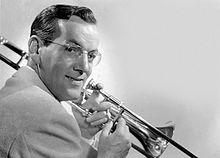
December 15: American bandleader Glenn Miller disappears into the English Channel.
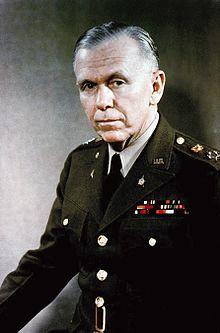
George Marshall becomes the first U.S. Five-Star General on December 16, 1944.
- December 1–Edward Stettinius, Jr. becomes the last United States Secretary of State of the Roosevelt administration, filling the seat left by Cordell Hull.
- December 3 – WWII:
- Fighting breaks out between Communists and royalists in newly liberated Greece, eventually leading to a full-scale Greek Civil War.
- The British Home Guard is stood down.
- December 7 – The Convention on International Civil Aviation is signed in Chicago, creating the International Civil Aviation Organization.
- December 10 – Italian conductor Arturo Toscanini leads a concert performance of the first half of Beethoven's Fidelio (minus its spoken dialogue) on NBC Radio, starring Rose Bampton. He chooses this opera for its political message: a statement against tyranny and dictatorship. Conducting it in German, Toscanini intends it as a tribute to the German people who are being oppressed by Hitler. The second half is broadcast a week later. The performance is later released on LP and CD, the first of 7 operas that Toscanini conducts on radio.
- December 12–December 13 – WWII: British units attempt to take the hilltop town of Tossignano, but are repulsed.
- December 13 – Battle of Mindoro: United States, Australian and Philippine Commonwealth troops land on Mindoro Island in the Philippines.
- December 14
- The Soviet government changes Turkish place names to Russian in the Crimea.
- The film National Velvet is released in the United States, bringing a young Elizabeth Taylor to stardom.
- December 15 – A USAAF utility aircraft carrying bandleader Major Glenn Miller disappears in heavy fog over the English Channel, while flying to Paris.
- December 16 – WWII:
- Germany begins the Ardennes offensive, later known as the Battle of the Bulge.
- General George C. Marshall becomes the first U.S. Five-Star General.
- December 17
- WWII: Malmedy massacre: German SS troops under Joachim Peiper machine gun American prisoners of war captured during the Battle of the Bulge near Malmedy, and elsewhere in Belgium.
- WWII: Bombing of Ulm: 707 people are killed and 25,000 are left homeless.
- December 18 – General Douglas MacArthur becomes the second U.S. Five-Star General.
- December 19 – The daily newspaper Le Monde begins publication in Paris.
- December 20
- The United States Women Airforce Service Pilots are disbanded.
- General Dwight D. Eisenhower is promoted to the rank of 5-star U.S. Five-Star General.
- December 22
- WWII: Brigadier General Anthony C. McAuliffe, commander of the U.S. forces defending Bastogne, refuses to accept demands for surrender by sending a one-word reply, "Nuts!", to the German command.
- The Vietnam People's Army is formed in French Indochina.
- December 24
- WWII: Troopship SS Léopoldville is sunk in the English Channel by German submarine U-486. Approximately 763 soldiers of the U.S. 66th Infantry Division, bound for the Battle of the Bulge, drown.[41]
- WWII: German tanks reach the furthest point of the Bulge at Celles.
- WWII: Fifty German V-1 flying bombs, air-launched from Heinkel He 111 bombers flying over the North Sea, target Manchester in England, killing 42 and injuring more than 100 in the Oldham area.[42][43]
- WWII: Bande massacre: 34 men between the ages of 17 and 32 are executed by the Sicherheitsdienst near Bande, Belgium, in retaliation for the killing of 3 German soldiers.
- The first complete U.S. production of Tchaikovsky's ballet The Nutcracker is presented in San Francisco, choreographed by Willam Christensen. It will become an annual tradition there, and for the next ten years, the San Francisco Ballet will be the only company in the United States performing the complete work.
- December 26
- WWII: American troops repulse German forces at Bastogne.
- The original stage version of The Glass Menagerie by Tennessee Williams premieres in Chicago.
- Esztergom, Hungary, is captured by the Russians.
- December 30
- King George II of Greece declares a regency, leaving his throne vacant.
- "Stage Door Cartoon" is the first cartoon produced by Eddie Selzer.
- December 31 – WWII: Battle of Leyte – Tens of thousands of Imperial Japanese Army soldiers are killed in action, in a significant Filipino/Allied military victory.
- The Arab Women's Congress of 1944 is hosted by the Egyptian Feminist Union in Cairo and the Pan-Arabian Arab Feminist Union is founded.
Date unknown
- The 1944 Summer Olympics, scheduled for London (together with the February Winter Olympics scheduled for Cortina d'Ampezzo in Italy), are suspended due to WWII.
- In Sweden, Erik Wallenberg and Ruben Rausing invent a way to package milk in paper, and start the company Tetra Pak.
- The National Council on Alcoholism and Drug Dependence is established in the United States.
- Last known evidence of the existence of the Asiatic lion in the wild in Khuzestan Province, Persia.[44]
- The BC Žalgiris professional basketball club is founded in Kaunas, Lithuanian Soviet Socialist Republic.[45]
Births
January
- January 1
- Omar Hasan Ahmad al-Bashir, 7th President of Sudan
- Abdul Hamid, 16th President of Bangladesh
- Jumabek Ibraimov, 5th Prime Minister of Kyrgyzstan (d. 1999)
- Zafarullah Khan Jamali, Pakistani politician, 15th Prime Minister of Pakistan (d. 2020)
- Bob Minor, American actor, stunt performer
- January 2 – Prince Norodom Ranariddh, Cambodian politician
- January 3 – Chris von Saltza, American swimmer
- January 6
- Bonnie Franklin, American actress, singer, dancer and television director (d. 2013)
- Rolf M. Zinkernagel, Swiss immunologist, recipient of the Nobel Prize in Physiology or Medicine
- January 7 – Mike Hebert, American volleyball coach (d. 2019)
- January 8 – Terry Brooks, American writer
- January 9
- Harun Farocki, German filmmaker, author, and lecturer (d. 2014)
- Ian Hornak, American painter, draughtsman and sculptor (d. 2002)
- Jimmy Page, English rock guitarist (Led Zeppelin)
- January 10
- Rory Byrne, South African engineer and car designer
- William Sanderson, American actor
- Frank Sinatra Jr., American singer, songwriter and actor (d. 2016)
- January 12
- Joe Frazier, African-American boxer (d. 2011)
- Vlastimil Hort, Czechoslovak-born German chess Grandmaster
- Carlos Villagrán, Mexican actor and comedian
- Klaus Wedemeier, German politician
- January 17
- Jan Guillou, Swedish author
- Françoise Hardy, French singer
- January 18
- January 19 – Shelley Fabares, American actress, singer
- January 20 – Isao Okano, Japanese judoka
- January 23
- Sergei Belov, Soviet basketball player (d. 2013)
- Rutger Hauer, Dutch actor, writer, and environmentalist (d. 2019)
- January 24
- David Gerrold, American screenwriter and novelist
- Klaus Nomi, German singer (d. 1983)
- January 25
- Sally Beauman, English writer (d. 2016)
- Evan Chandler, American screenwriter, dentist (suicide 2009)
- January 26
- Angela Davis, African-American political activist, academic, and author
- Jerry Sandusky, American child molester, Penn State coach
- January 27
- Peter Akinola, Nigerian religious leader
- Mairead Maguire, Northern Irish peace activist, recipient of the Nobel Peace Prize
- Nick Mason, English rock drummer
- January 28
- Susan Howard, American actress
- Rosalía Mera, Spanish fashion retailer (Zara) (d. 2013)
- John Tavener, English composer (d. 2013)
- January 29 – Susana Giménez, Argentinian television presenter
- January 31 – Connie Booth, American writer, actress
February
- February 2
- Geoffrey Hughes, English actor (d. 2012)
- Oqil Oqilov, Tajikistani politician, 7th Prime Minister of Tajikistan
- February 4
- Punch Gunalan, Malaysian badminton star (d. 2012)
- Maruja Carrasco, Spanish botanist and academic (d. 2018)
- February 5
- Al Kooper, American rock musician (Blood, Sweat & Tears)
- Thekla Carola Wied, German actress
- February 8
- February 9 – Alice Walker, African-American novelist, writer, poet and activist
- February 10
- Peter Allen, Australian-born Academy Award-winning composer and lyricist (d. 1992)
- Jean-Daniel Cadinot, French photographer, director and producer (d. 2008)
- February 11 – Michael G. Oxley, American politician (d. 2016)
- February 12 – Moe Bandy, American country music singer
- February 13
- Stockard Channing, American actress
- Michael Ensign, American actor
- Jerry Springer, English-born American politician and television personality
- February 14
- Carl Bernstein, American journalist
- Sir Alan Parker, English film director, producer, actor and writer (d. 2020)
- February 15
- Mick Avory, English musician (The Kinks)
- Dzhokhar Dudayev, Chechen leader, first President of the Chechen Republic of Ichkeria (d. 1996)
- February 16
- Richard Ford, American writer
- António Mascarenhas Monteiro, President of Cape Verde (d. 2016)
- February 17
- Karl Jenkins, Welsh composer
- Bernie Grant, British Labour Party MP (d. 2000)
- February 19 – Donald F. Glut, American writer, film director and screenwriter
- February 20
- Abdul Hamid Zainal Abidin, Malaysian politician and diplomat (d. 2014)
- Willem van Hanegem, Dutch footballer and coach
- February 22
- Jonathan Demme, American film director, producer and writer (d. 2017)
- Tom Okker, Dutch tennis player
- Robert Kardashian, American attorney and businessman (d. 2003)
- February 23 – Johnny Winter, American rock musician (d. 2014)
- February 24 – Ivica Račan, Croatian politician (d. 2007)
- February 25 – François Cevert, French racing driver (d. 1973)
- February 27
- Ken Grimwood, American writer (d. 2003)
- Roger Scruton, English philosopher and writer (d. 2020)
- February 28
- Fanny Cano, Mexican actress and producer (d. 1983)
- Sepp Maier, German footballer
- February 29 – Dennis Farina, American actor (d. 2013)
March
- March 1
- John Breaux, American politician
- Roger Daltrey, English singer-songwriter (The Who), actor
- March 2
- Uschi Glas, German actress
- Leif Segerstam, Finnish conductor and composer
- March 3 – Odessa Cleveland, American actress (M*A*S*H)
- March 4
- Harvey Postlethwaite, English engineer and race car designer (d. 1999)
- Bobby Womack, African-American singer and songwriter (d. 2014)
- March 5 – Peter Brandes, Danish artist
- March 6
- Dame Kiri Te Kanawa, New Zealand soprano
- Mary Wilson, African-American singer (The Supremes) (d. 2021)
- March 7
- Michael Rosbash, American geneticist and chronobiologist, recipient of the Nobel Prize in Physiology or Medicine
- Townes Van Zandt, American country singer (d. 1997)
- March 8 – Buzz Hargrove, Canadian labour leader
- March 11
- Graham Lyle, Grammy-winning Scottish singer-songwriter and guitarist, known for writing several international hits for Tina Turner
- Don Maclean, English comedian and broadcaster
- March 15
- Emmerich Danzer, Austrian figure skater
- Ralph MacDonald, American percussionist, songwriter (d. 2011)
- March 17
- Pattie Boyd, English model and first wife of George Harrison and Eric Clapton
- John Sebastian, American singer-songwriter (The Lovin' Spoonful)
- March 18 – Dick Smith, Australian entrepreneur
- March 19
- Said Musa, Prime Minister of Belize
- Sirhan Sirhan, Palestinian assassin of Robert F. Kennedy
- March 20 – Erwin Neher, German biophysicist
- March 21 – Hilary Minster, English actor (d. 1999)
- March 23 – Ric Ocasek, American singer, songwriter, and record producer (The Cars) (d. 2019)
- March 24 – R. Lee Ermey, American film, television and voice actor, and Marine drill instructor (d. 2018)
- March 26 – Diana Ross, African-American actress and singer
- March 27 – Ann Sidney, Miss World
- March 28
- Rick Barry, American basketball player
- Ken Howard, American actor (d. 2016)
- March 29
- Nana Akufo-Addo, President of Ghana
- Denny McLain, American baseball player
April
- April 3 – Tony Orlando, American musician
- April 4
- Faisal bin Musaid, assassin and nephew of King Faisal of Saudi Arabia (d. 1975)
- Magda Aelvoet, Belgian politician
- Craig T. Nelson, American actor
- April 5 – Peter T. King, American politician
- April 6
- Judith McConnell, American actress
- Anita Pallenberg, Italian-born model and actress (d. 2017)
- Dame Felicity Palmer, English soprano
- April 7
- Shel Bachrach, American insurance broker, investor, businessman and philanthropist
- Warner Fusselle, American sportscaster (d. 2012)
- Gerhard Schröder, Chancellor of Germany
- Oshik Levi, Israeli singer and actor
- April 8
- Burny Bos, Dutch producer, scenarist and children's book writer.
- Odd Nerdrum, Norwegian painter
- Jimmy Walker, American professional basketball player (d. 2007)
- April 10 – Abubakar Habu Hashidu, Nigerian politician (d. 2018)
- April 11 – John Milius, American film director, producer and screenwriter
- April 13 – Jack Casady, American rock musician (Jefferson Airplane, Hot Tuna)
- April 14 – Nguyễn Phú Trọng, Vietnamese politician, General Secretary of the Communist Party and President
- April 15 – Kunishige Kamamoto, Japanese footballer, manager and politician
- April 18
- Charlie Tuna, American disc jockey and game show announcer (d. 2016)
- Isao Shibata, former Japanese professional baseball player
- April 19
- Bernie Worrell, American keyboardist, composer (Parliament-Funkadelic) (d. 2016)
- James Heckman, American economist, Nobel Prize laureate
- April 20 – Thein Sein, Burmese politician, 8th President of Myanmar
- April 22 – Steve Fossett, American aviator, sailor and millionaire adventurer (d. 2007)
- April 24 – Tony Visconti, American record producer, musician and singer
- April 25 – Len Goodman, British ballroom dancer and television personality
- April 26
- Amien Rais, Indonesian politician
- Larry H. Miller, American sports owner (Utah Jazz; d. 2009)
- April 27
- Michael Fish, British TV weatherman
- Cuba Gooding Sr., American actor and singer (d. 2017)
- April 28 – Jean-Claude Van Cauwenberghe, Belgian politician
- April 29
- Princess Benedikte of Denmark
- Richard Kline, American actor and television director
- April 30
- Rudi Assauer, German footballer and manager (d. 2019)
- Jill Clayburgh, American actress (d. 2010)
May
- May 1
- Costa Cordalis, German singer (d. 2019)
- Suresh Kalmadi, Indian politician
- Marva Whitney, American singer (d. 2012)
- May 4 – Russi Taylor, American actress (d. 2019)
- May 5
- Roger Rees, Welsh actor and director (d. 2015)
- John Rhys-Davies, Welsh actor
- May 8 – Gary Glitter, English singer
- May 9
- Richie Furay, American musician (Poco, Buffalo Springfield)
- Lars Norén, Swedish playwright, novelist and poet (d. 2021)
- Laurence Owen, American figure skater (d. 1961)
- May 10
- Jim Abrahams, American film director
- Jackie Lomax, English singer-songwriter, guitarist (d. 2013)
- May 12 – Sara Kestelman, English actress
- May 13
- Armistead Maupin, American author
- Carolyn Franklin, American singer (d. 1988)
- May 14
- Connie Lawn, American journalist (d. 2018)
- George Lucas, American film director and producer
- May 15
- Ulrich Beck, German sociologist (d. 2015)
- Gunilla Hutton, Swedish-born American actress and singer
- May 16 – Danny Trejo, Hispanic-American actor
- May 17
- Luís de Matos Monteiro da Fonseca, Cape Verdean diplomat and civil servant
- Jesse Winchester, American-Canadian musician and songwriter (d. 2014)
- May 19 – Peter Mayhew, English-American actor (d. 2019)
- May 20
- Joe Cocker, English rock singer (d. 2014)
- Boudewijn de Groot, Dutch singer
- Dietrich Mateschitz, Austrian businessman
- May 21 – Mary Robinson, President of Ireland
- May 22 – Roberto A. Abad, Filipino lawyer
- May 23
- John Newcombe, Australian tennis player
- Avraham Oz, Israeli theater professor, translator, and political activist
- May 24 – Patti LaBelle, American singer, actress and entrepreneur
- May 25 – Frank Oz, English puppeteer and film director
- May 26 – Jan Schakowsky, U.S. Representative, Illinois's 9th congressional district
- May 27 – Chris Dodd, American politician
- May 28
- Rudy Giuliani, American politician, former Mayor of New York City
- Gladys Knight, American singer
- Sondra Locke, American actress and director (d. 2018)
- Rita MacNeil, Canadian folk singer (d. 2013)
- Patricia, Lady Stephens (née Quinn), retired Northern Irish actress
- Gary Stewart, American country rock singer, songwriter and musician (d. 2003)
- May 29 – Helmut Berger, Austrian actor
- May 30 – Meredith MacRae, American actress (d. 2000)
- May 31 – Ayad Allawi, 38th Prime Minister of Iraq
June
- June 1 – Robert Powell, English actor
- June 2
- Garo Yepremian, American football player (d. 2015)
- Marvin Hamlisch, American composer, conductor (d. 2012)
- June 3 – Edith McGuire, American sprinter
- June 4 – Michelle Phillips, American singer and actress
- June 5
- Colm Wilkinson, Irish actor and singer
- Whitfield Diffie, American cryptographer
- June 6
- Phillip Allen Sharp, American scientist, recipient of the Nobel Prize in Physiology or Medicine
- Edgar Froese, German musician (d. 2015)
- Tommie Smith, American athlete
- June 7 – Annette Lu, Taiwanese politician, 8th Vice President of the Republic of China
- June 8
- Mark Belanger, American baseball player (d. 1998)
- Don Grady, American actor and singer (d. 2012)
- Marc Ouellet, Canadian cardinal
- Boz Scaggs, American singer and guitarist
- June 13 – Ban Ki-moon, South Korean politician and 8th Secretary-General of the United Nations
- June 15 – Malaysia Vasudevan, Tamil playback singer and actor (d. 2011)
- June 16 – Henri Richelet, French painter
- June 17 – Bill Rafferty, American comedian and impressionist (d. 2012)
- June 18
- Salvador Sánchez Cerén, 45th President of El Salvador
- Sandy Posey, American musician
- Rick Griffin, American artist (d. 1991)
- June 19 – Chico Buarque, Brazilian musician
- June 21
- Carmen Cardinali Paoa, Chilean professor
- Franco Cordova, Italian international football player
- Corinna Tsopei, Greek actress, model and beauty queen who won Miss Universe 1964
- Ray Davies, English rock-singer and songwriter, co-founder of The Kinks
- Kenny O'Dell, American country singer-songwriter (d. 2018)
- Tony Scott, English film director (d. 2012)
- Luigi Sgarbozza, Italian former cyclist
- Chris Wood, English musician (Traffic) (d. 1983)
- June 22
- Ercole Gualazzini, Italian professional road bicycle racer
- Gérard Mourou, French electrical engineer, recipient of the Nobel Prize in Physics
- June 23
- Silvestre Bello III, Filipino businessman and lawyer
- Gan Ee Kiang, Malaysian pharmacologist
- June 24
- Dennis Butler, English former footballer and football manager
- John "Charlie" Whitney, English guitarist
- Jeff Beck, English rock musician
- June 25 – Ricardo Salgado, Portuguese economist and banker
- June 27
- Paul Koslo, German-Canadian actor (d. 2019)
- Zezé Motta, Brazilian actress and singer
- Patrick Sercu, Belgian cyclist (d. (2019)
- June 28 – Luis Nicolao, Argentine butterfly swimmer
- June 29
- Gary Busey, American actor
- Seán Patrick O'Malley, American cardinal
- June 30
- Daniel Kablan Duncan, Ivorian politician
- Terry Funk, American professional wrestler
- Raymond Moody, American parapsychologist
- Alan C. Fox, American author, philanthropist and entrepreneur
- Glenn Shorrock, English musician
July
- July 1
- Mercedes Bresso, Italian politician
- Mike Horan, Australian politician
- Diron Talbert, American football player
- Syd Jackson, Australian rules footballer
- July 2
- Billy Campbell, Northern Irish professional footballer
- Vicente de la Mata, Argentine former football midfielder
- Paul Schudel, American football player and coach
- July 3 – Michel Polnareff, French singer
- July 4
- Joe Berardo, Portuguese businessman, investor, and art collector
- Joe Critchlow, Canadian football player
- Albert Kapengut, Soviet chess master
- July 5
- Mick Andrews, English international motorcycle trials rider
- Hendrik Born, German vice admiral
- Enrique Irazoqui, Spanish movie actor
- July 6
- Tim Brown, Australian darts player
- Gunhild Hoffmeister, East German middle-distance runner
- Max Timisela, Indonesian footballer
- July 7
- Feri Cansel, Turkish-Cypriot actress (d. 1983)
- Nicholas, Crown Prince of Montenegro
- Mark Burgess, New Zealand cricketer
- Jürgen Grabowski, German footballer
- Tony Jacklin, English golfer
- Feleti Sevele, former Prime Minister of Tonga
- Michael Walker, Baron Walker of Aldringham, British Army officer
- July 8
- Johanny "Jaimoe" Johanson, American drummer
- Jeffrey Tambor, American actor
- William H. Pitsenbarger, United States Air Force Medal of Honour recipient (d. 1966)
- July 10 – Carlos Ruckauf, Argentine politician
- July 11
- Keith Doncon, Australian rules footballer
- Neil Vant, Anglican clergyman, prospector, businessman and former political figure
- Valdeir Vieira, Brazilian football manager
- July 12
- Terry Cooper, English former football player and manager
- Clarence Parfitt, Bermudian-Scottish cricketer
- July 13 – Ernő Rubik, Hungarian inventor
- July 14 – Aad Mansveld, Dutch footballer (d. 1991)
- July 16
- Clarence Parfitt, Bermudian and Scottish cricketer
- Jose L. Cuisia Jr., Philippine diplomat and banker
- Angharad Rees, Welsh actress (d. 2012)
- July 17
- Mark Burgess, New Zealand cricket captain
- Catherine Schell, Hungarian actress
- Charles Lapointe, Canadian businessman, politician and public servant
- Tom Kalinske, American businessman
- Carlos Alberto Torres, Brazilian footballer (d. 2016)
- July 18 – David Hemery, British Olympic athlete
- July 20
- Mel Daniels, American basketball player and coach (d. 2015)
- W. Cary Edwards, American politician (d. 2010)
- July 21
- John Atta Mills, 13th President of Ghana (d. 2012)
- Paul Wellstone, U.S. Senator from Minnesota (d. 2002)
- July 23 – Alex Buzo, of Sydney, Australian playwright and author (d. 2006)
- July 26
- Celeste Yarnall, American actress (d. 2018)
- Kiel Martin, American actor (d. 1990)
- July 28 – Jozo Križanović, Bosnian politician (d. 2009)
- July 31
- Geraldine Chaplin, English-American actress
- Jonathan Dimbleby, British journalist and author
- Robert C. Merton, American economist, Nobel Prize laureate
August
- August 1
- Andrew G. Vajna, Hungarian-American film producer (d. 2019)
- Yury Romanenko, Soviet cosmonaut
- August 2
- Jim Capaldi, British drummer, singer and songwriter (d. 2005)
- Naná Vasconcelos, Brazilian percussionist and vocalist (d. 2016)
- August 3 – Jonas Falk, Swedish actor (d. 2010)
- August 4
- Richard Belzer, American actor and comedian
- William Frankfather, American actor (d. 1998)
- Orhan Gencebay, Turkish musician, composer, singer and actor
- August 7
- John Glover, American actor
- Robert Mueller, American lawyer and former FBI director
- August 8
- Michael Johnson, American singer-songwriter and guitarist (d. 2017)
- Hasyim Muzadi, Indonesian Islamic scholar (d. 2017)
- August 9 – Sam Elliott, American actor
- August 11
- Ian McDiarmid, Scottish actor
- Frederick W. Smith, American founder of FedEx
- August 12 – Larry Troutman, American musician (d. 1999)
- August 13 – Kevin Tighe, American actor
- August 15 – Sylvie Vartan, French singer
- August 18
- Robert Hitchcock, Australian sculptor
- Volker Lechtenbrink, German television actor and singer
- Helena Rojo, Mexican actress and model
- August 19
- Mordechai Spiegler, Israeli footballer and manager[46]
- Charles Wang, Chinese-born American businessman, philanthropist and sports team owner (d. 2018)
- Bodil Malmsten, Swedish writer (d. 2016)
- August 20 – Rajiv Gandhi, Prime Minister of India (d. 1991)
- August 21
- Kari S. Tikka, Finnish Professor of Finance (d. 2006)
- Peter Weir, Australian film director
- August 22 – Ayşen Gruda, Turkish actress and comedian (d. 2019)
- August 23
- Saira Banu, Indian actress
- Roberto D'Aubuisson, Salvadorean Army officer and right-wing political leader (d. 1992)
- August 24 – Rocky Johnson, Canadian professional wrestler (d. 2020)
- August 25 – Christine Chubbuck, American television reporter (d. 1974)
- August 26 – Prince Richard, Duke of Gloucester
- August 27 – G. W. Bailey, American actor
- August 30 – Tug McGraw, American baseball player (d. 2004)
- August 31
- Jos LeDuc, Canadian professional wrestler (d. 1999)
- Earnie Shavers, African-American professional wrestler
September
- September 1 – Leonard Slatkin, American conductor
- September 2 – Gilles Marchal, French musician
- September 3
- Ty Warner, American Businessman, Inventor: Beanie Babies
- September 4 – Tony Atkinson, British economist (d. 2017)
- September 6
- Christian Boltanski, French artist
- Swoosie Kurtz, American actress
- September 7
- Abul Hayat, Bangladeshi actor
- Earl Manigault, American basketball player (d. 1998)
- Bora Milutinović, Serbian footballer and coach
- Sam Sloan, American chess player and autodidact
- September 12
- Leonard Peltier, Native American activist and convicted murderer
- Barry White, African-American singer (d. 2003)
- September 13
- Carol Barnes, British newsreader (d. 2008)
- Jacqueline Bisset, English actress
- Peter Cetera, lead singer and guitarist of American rock group Chicago
- September 15
- Yoweri Museveni, Ugandan politician, 9th President of Uganda
- Graham Taylor, English footballer and football manager (d. 2017)
- September 17 – Reinhold Messner, Italian mountaineer
- September 18
- Veronica Carlson, English actress and model
- Satan's Angel, American exotic dancer
- September 19 – İsmet Özel, Turkish poet
- September 21
- Caleb Deschanel, American cinematographer and film director
- Hamilton Jordan, Jimmy Carter's first White House Chief of Staff (d. 2008)
- September 22 – Frazer Hines, British actor
- September 25 – Michael Douglas, American actor and producer
- September 26 – Anne Robinson, British television host
- September 27 – Angélica María, American-born Mexican singer-songwriter and actress[47]
- September 28 – Miloš Zeman, 3rd President of the Czech Republic
- September 30 – Jimmy Johnstone, Scottish footballer (d. 2006)
October
- October 2 – Vernor Vinge, American science fiction writer
- October 4
- Rocío Dúrcal, Spanish singer and actress (d. 2006)
- Tony La Russa, American baseball player and manager
- October 5 – Arnhim Eustace, Vincentian politician and 3rd Prime Minister of Saint Vincent and the Grenadines
- October 6
- Dhammananda Bhikkhuni, born Chatsumarn Kabilsingh, pioneering female Thai Buddhist monk, previously academic
- Mylon LeFevre, American singer and evangelist
- October 8 – Dale Dye, American actor, technical advisor, radio personality and writer
- October 9
- John Entwistle, English rock bass guitarist and singer-songwriter (The Who) (d. 2002)
- Nona Hendryx, American R&B singer (Labelle)
- Peter Tosh, Jamaican singer and musician (d. 1987)
- October 14 – Udo Kier, German actor
- October 15
- Mac Collins, American politician (d. 2018)
- Şerif Gören, Turkish film director
- Haim Saban, Israeli-American media proprietor
- David Trimble, Northern Irish Unionist political leader; recipient of the Nobel Peace Prize 1998
- October 16 – Elizabeth Loftus, American cognitive psychologist and memory specialist
- October 20 – Clive Hornby, English actor (d. 2008)
- October 21 – Jean-Pierre Sauvage, French scientist; recipient of the Nobel Prize in Chemistry 2016
- October 25
- Jon Anderson, English rock singer-songwriter and musician
- Ron Coote, Australian rugby league player
- Kati Kovács, Hungarian jazz, pop and rock musician
- Azizan Abdul Razak, Malaysian politician (d. 2013)
- October 27 – Nikolai Karachentsov, Russian actor (d. 2018)
- October 28
- Dennis Franz, American actor
- Ian Marter, English actor and writer (d. 1986)
- Marián Labuda, Slovak actor (d. 2018)
- October 30 – Ahmed Chalabi, Iraqi businessman and politician (d. 2015)
- October 31 – Hal Wick, American politician (d. 2018)
November
- November 1
- Florindo Fabrizio, American politician (d. 2018)
- Kinky Friedman, American singer, songwriter, novelist, humorist, politician, and columnist
- Rafic Hariri, 2-Time Prime Minister of Lebanon (d. 2005)
- Bobby Heenan, American professional wrestling manager and commentator (d. 2017)
- Oscar Temaru, President of French Polynesia
- November 2
- Michael Buffer, American Ring announcer, and actor
- Keith Emerson, English keyboardist (d. 2016)
- November 4 – Linda Gary, American actress (d. 1995)
- November 7 – Luigi Riva, Italian footballer
- November 10
- Askar Akayev, 1st President of Kyrgyzstan
- Silvestre Reyes, American politician
- Tim Rice, English lyricist, writer and broadcaster
- November 11 – Kemal Sunal, Turkish comedian
- November 12
- Booker T. Jones, American musician, singer and songwriter
- Al Michaels, American sportscaster
- November 17
- Jim Boeheim, American basketball player and coach
- Gene Clark, American singer-songwriter (d. 1991)
- Danny DeVito, American actor, film producer and director
- Rem Koolhaas, Dutch architect
- Lorne Michaels, Canadian television and film producer
- Tom Seaver, American baseball pitcher (d. 2020)
- Sammy Younge Jr., American civil rights activist (d. 1966)
- November 18
- Wolfgang Joop, German artist, fashion designer, and art collector
- Edwin C. Krupp, American astronomer author, and Director of the Griffith Observatory
- November 20
- Louie Dampier, American basketball player
- Donald DiFrancesco, American lawyer and politician, 51st Governor of New Jersey
- November 21
- Richard Durbin, American politician
- Earl Monroe, American basketball player
- Harold Ramis, American actor, director and comedy writer (d. 2014)
- November 23 – Peter Lindbergh, German fashion photographer, and film director (d. 2019)
- November 24
- Candy Darling, American actress (d. 1974)
- Ibrahim Gambari, Nigerian scholar and diplomat
- November 25
- Ben Stein, American law professor, actor and author
- Michael Kijana Wamalwa, Kenyan politician, 8th Vice President of Kenya
- November 30 – George Graham, Scottish football player and manager
December
- December 1 – John Densmore, drummer, member of The Doors.
- December 2
- Cathy Lee Crosby, American actress (That's Incredible!)
- Ibrahim Rugova, 1st President of Kosovo (d. 2006)
- December 3 – Ralph McTell English singer songwriter
- December 4 – Dennis Wilson, American singer, songwriter and drummer (d. 1983)
- December 5 – Jeroen Krabbé, Dutch actor and film director
- December 6
- Kit Culkin, American stage actor
- Ron Kenoly, American Christian leader
- Sutiyoso, Indonesian politician, former general and former governor of Jakarta
- Jonathan King, British music producer
- December 7
- Daniel Chorzempa, American organist
- Georges Coste, French Rugby player and coach
- December 8 – Sharmila Tagore, Indian actress and model
- December 9
- Giacomo dalla Torre del Tempio di Sanguinetto, 80th Prince and Grand Master of the Sovereign Military Order of Malta (d. 2020)
- Tadashi Irie, Japanese yakuza boss
- Ki Longfellow, American novelist
- Neil Innes, English writer, comedian and musician (d. 2019)
- December 10 – Andris Bērziņš, 8th President of Latvia
- December 11
- Brenda Lee, American singer
- Lynda Day George, American actress
- Teri Garr, American actress
- December 12
- Diana Bracho, Mexican actress
- Kenneth Cranham, Scottish born actor
- Cara Duff-MacCormick, Canadian stage actress
- December 17 – Bernard Hill, British actor
- December 19
- Mitchell Feigenbaum, American mathematical physicist (d. 2019)
- María Martha Serra Lima, Argentine singer (d. 2017)
- Tim Reid, African-American actor and film director
- Terry Underwood, Australian author
- December 20 – Ray Martin, Australian journalist and television presenter
- December 21
- Bill Atkinson, English footballer
- Michael Tilson Thomas, American conductor
- Zheng Xiaoyu, Chinese bureaucrat (d. 2007)
- December 22 – Steve Carlton, American baseball player
- December 23
- Wesley Clark, U.S. general and NATO Supreme Allied Commander
- Ingar Knudtsen, Norwegian writer
- December 24 – Erhard Keller, German speed skater
- December 25 – Jairzinho, Brazilian football player
- December 26
- Bill Ayers, American education theorist and former radical anti-war activist
- Jane Lapotaire, British actress
- Aleksey Mikhalyov, Russian translator
- December 28
- Edgar Vivar, Mexican actor, Señor Barriga and Ñoño in El Chavo del Ocho
- Kary Mullis, American chemist, Nobel Prize laureate (d. 2019)
- December 29 – King Birendra of Nepal (d. 2001)
- December 30 – Joseph Hilbe, American statistician and author
- December 31
- Neil Ross, British-American voice actor and announcer
- Jan Widströmer, Swedish artist
Deaths
January
- January 1
- Edwin Lutyens, British architect (b. 1869)
- Charles Turner, Australian cricketer (b. 1862)
- January 3 – Franz Reichleitner, Austrian SS officer and Nazi concentration camp commandant (b. 1906)
- January 4 – Kaj Munk, Danish playwright, Lutheran pastor and martyr (b. 1898)
- January 6 – Ida Tarbell, American journalist and muckraker (b. 1857)
- January 7 – Lou Henry Hoover, First Lady of the United States (b. 1874)
- January 9 – Antanas Smetona, President of Lithuania (b. 1874)
- January 10
- William Emerson Ritter, American biologist (b. 1856)
- Andrey Toshev, Bulgarian scientist and diplomat, 26th Prime Minister of Bulgaria (b. 1867)
- January 11
- Notable Italian Fascist leaders executed in the Verona Trial
- Emilio De Bono, General, former member of the Grand Council of Fascism (b. 1866)
- Gian Galeazzo Ciano, 2nd Count of Cortellazzo and Buccari, aristocrat and diplomat, former member of the Grand Council of Fascism (b. 1903)
- Giovanni Marinelli, former member of the Grand Council of Fascism (b. 1879)
- Charles King, American actor (b. 1889)
- Edgard Potier, Belgian spy (suicide) (b. 1903)
- Notable Italian Fascist leaders executed in the Verona Trial
- January 12
- Nicholas Bunkerd Kitbamrung, Thai Roman Catholic priest and blessed (b. 1895)
- Juliette Atkinson, American tennis champion (b. 1873)
- January 13 – King Yuhi V of Rwanda (b. 1883)
- January 14 – Mehmet Emin Yurdakul, Turkish writer (b. 1869)
- January 18 – Léon Brunschvicg, French philosopher (b. 1869)
- January 20 – James McKeen Cattell, American psychologist (b. 1860)
- January 21 – Yoshimi Nishida, Japanese general (b. 1892)
- January 23 – Edvard Munch, Norwegian painter (b. 1863)
- January 25 – Teresa Grillo Michel, Italian Roman Catholic nun and blessed (b. 1855)
- January 29 – William Allen White, American journalist (b. 1868)
- January 31
- Jean Giraudoux, French writer (b. 1882)
- Árpád Weisz, Hungarian footballer (b. 1896)
February
- February 1 – Piet Mondrian, Dutch painter (b. 1872)
- February 4 – Yvette Guilbert, French singer and actress (b. 1867)
- February 7 – Robert E. Park, American sociologist (b. 1864)
- February 9 – Agnes Mary Frances Duclaux, British poet, essayist and novelist (b. 1857)
- February 11 – Carl Meinhof, German linguist (b. 1857)
- February 12
- Kenneth Gandar-Dower, English sportsman, aviator, explorer and author (b. 1908)
- Margaret Woodrow Wilson, American singer; Presidential daughter (b. 1886)
- February 13 – Edgar Selwyn, American screenwriter (b. 1875)
- February 16
- Carl August Ehrensvärd, Swedish admiral (b. 1858)
- Henri Nathansen, Danish writer and director (b. 1868)
- February 21 – Ferenc Szisz, Hungarian-born race car driver (b. 1873)
- February 23 – Leo Baekeland, Belgian-born American chemist (b. 1863)
- February 29 – Pehr Evind Svinhufvud, Finnish politician, 1st Prime Minister and 3rd President of Finland (b. 1861)
March
- March 2 – Ida Maclean, British biochemist, the first woman admitted to the London Chemical Society (b. 1877)
- March 3 – Paul-Émile Janson, Belgian politician, 30th Prime Minister of Belgium (b. 1872)
- March 4 – Louis Buchalter, Jewish-born American mobster, head of Murder, Inc. (executed) (b. 1897)
- March 5
- Max Jacob, French poet (b. 1876)
- Neel E. Kearby, American fighter ace (killed in action) (b. 1911)
- March 8 - Xu Zonghan, Chinese medical doctor, politician and revolutionary (b. 1877)
- March 9 – Demetrios Capetanakis, Greek poet, essayist and critic (b. 1912)
- March 11
- Hendrik Willem van Loon, Dutch-born American historian, journalist and writer (b. 1882)
- Irvin S. Cobb, American writer (b. 1876)
- March 15
- Otto von Below, German general (b. 1857)
- Mariya Oktyabrskaya, Soviet national hero (b. 1905)
- March 17 – Mario Bravo, Argentinian politician and writer (b. 1862)
- March 19
- Giuseppe de Liguoro, Italian actor and director (b. 1869)
- Noël Édouard, vicomte de Curières de Castelnau, French general (b. 1851)
- March 22 – Pierre Brossolette, journalist and French Resistance fighter (b. 1903)
- March 23 – Myron Selznick, American film producer (b. 1898)
- March 24
- Aldo Finzi, Italian politician (executed) (b. 1891)
- Pietro Pappagallo, Italian Roman Catholic priest and blessed (b. 1888)
- Orde Wingate, British soldier (b. 1903)
- March 25 – Omelyan Kovch, Soviet Roman Catholic and Greek Orthodox priest, martyr and blessed (b. 1884)
- March 31
- Antoni Kiewnarski, Polish WWII hero (b. 1899)
- Mineichi Koga, Japanese admiral (b. 1885)
- Włodzimierz Kolanowski, Polish army officer (b. 1913)
April
- April 1 – Sharifzyan Kazanbaev, Soviet army officer (b. 1916)
- April 2 – John Batchelor, British missionary and reverend (b. 1855)
- April 9 – Yevgeniya Rudneva, Soviet WWII heroine (b. 1920)
- April 13 – Bartolomeo Gosio, Italian scientist (b. 1863)
- April 15 – Giovanni Gentile, Italian philosopher and Fascist politician (assassinated) (b. 1875)
- April 17 – J. T. Hearne, English cricketer (b. 1867)
- April 21 – Hans-Valentin Hube, German army general (b. 1890)
- April 24 – Charles Jordan, American magician (b. 1888)
- April 25 – George Herriman, American cartoonist (b. 1880)
- April 28
- Mohammed Alim Khan, Emir of Bukhara (b. 1880)
- Frank Knox, American Secretary of the Navy during WWII (b. 1874)
- April 29
- Billy Bitzer, American cinematographer (b. 1874)
- Bernardino Machado, Portuguese political figure, 2-time Prime Minister of Portugal and 2-time President of Portugal, leader of the World War I (b. 1851)
- April 30 – Paul Poiret, French couturier (b. 1879)
May
- May 5 – Bertha Benz, German automotive pioneer, wife and business partner of automobile inventor Karl Benz (b. 1849)
- May 7 – William Ledyard Rodgers, American admiral and military and naval historian (b. 1860)
- May 8 – Albert Leo Stevens, pioneering American balloonist (b. 1877)
- May 11 – Leon Kozłowski, Polish archaeologist and politician, 25th Prime Minister of Poland (b. 1892)
- May 12
- Max Brand, American author (b. 1892)
- Harold Lowe, British sailor, 5th officer of the RMS Titanic (b. 1882)
- Arthur Quiller-Couch, British writer (b. 1863)
- Edel Quinn, Irish Roman Catholic laywoman, missionary and venerable (b. 1907)
- May 15 – Patriarch Sergius I (b. 1867)
- May 16 – George Ade, American author (b. 1866)
- May 17 – Milena Jesenská, Czechoslovakian journalist, writer, editor and translator (b. 1896)
- May 20
- Fraser Barron, New Zealand bomber pilot during WWII (b. 1921)
- Eugenio Colorni, Italian philosopher and activist (b. 1909)
- Vincent Rose, American musician and band leader (b. 1880)
- May 21
- Edmund Mortimer, American actor and director (b. 1874)
- Li Jiayu, Chinese general of the National Revolutionary Army (b. 1892)
- May 23 – Thomas Curtis, American Olympic athlete (b. 1873)
- May 24
- Inigo Campioni, Italian admiral (executed) (b. 1878)
- Matsuji Ijuin, Japanese admiral (b. 1893)
- Luigi Mascherpa, Italian admiral (b. 1893)
- Harold Bell Wright, American writer (b. 1872)
- May 25 – Clark Daniel Stearns, 9th Governor of American Samoa (b. 1870)
- May 30
- Patriarch Mesrob I Naroyan of Constantinople (b. 1875)
- Jessie Ralph, American actress (b. 1864)
June
- June 5 – Józef Beck, Polish statesman (b. 1894)
- June 6
- Joseph Campbell, Northern Irish poet and lyricist (b. 1879)
- Wilhelm Falley, German general (killed in action) (b. 1897)
- Don Pratt, American general (killed in action) (b. 1892)
- Ker-Xavier Roussel, French painter (b. 1867)
- June 12 – Erich Marcks, German general (b. 1891)
- June 16
- Marc Bloch, French historian (b. 1886)
- Sir Prafulla Chandra Ray, Indian chemist (b. 1861)
- June 18 – Harry Fielding Reid, American geophysicist and seismologist (b. 1859)
- June 25
- Dénes Berinkey, 21st Prime Minister of Hungary (b. 1871)
- Lucha Reyes, Mexican singer (b. 1906)
- María Chinchilla Recinos, Guatemalan teacher (b. 1909)
- June 27 – Milan Hodža, Slovak politician, champion of regional integration in Europe (b. 1878)
- June 28 – Anton Breinl, Australian medical practitioner and researcher (b. 1880)
July
- July 1 – Carl Mayer, Austrian screenwriter (b. 1894)
- July 6
- Andrée Borrel, French World War II heroine (b. 1919)
- Vera Leigh, British World War II heroine (b. 1903)
- Chūichi Nagumo, Japanese admiral (b. 1887)
- Sonya Olschanezky, German World War II heroine (b. 1923)
- Diana Rowden, British World War II heroine (b. 1915)
- July 7 – Georges Mandel, French politician and WWII hero (b. 1885)
- July 8
- George B. Seitz, American director (b. 1888)
- Takeo Takagi, Japanese admiral (killed in action) (b. 1892)
- July 9 – Ingvar Fredrik Håkansson, Swedish pilot (b. 1920)
- July 12
- Jesus Baza Duenas, Guamese Roman Catholic priest, martyr and blessed (b. 1911)
- Theodore Roosevelt Jr., American political and business leader (b. 1887)
- July 14 – Asmahan, Syrian-born Egyptian singer (b.1918)
- July 15 – Joseph Sadi-Lecointe, French aviator (b. 1891)
- July 16 – Moncena Dunn, American inventor (b. 1867)
- July 17 – Tarsykiya Matskiv, Soviet Eastern Catholic religious sister and blessed (b. 1919)
- July 18
- Augusto De Angelis, Italian writer and journalist (b. 1888)
- George Holt, American actor and director (b. 1878)
- Rex Whistler, British artist (b. 1905)
- July 20
- Heinz Brandt, German officer (b. 1907)
- Mildred Harris, American actress (b. 1901)
- Günther Korten, German colonel-general, chief of staff of the Luftwaffe (b. 1898)
- Claus von Stauffenberg, German resistance leader (b. 1907)
- July 21
- Ludwig Beck, German general and Chief of the German General Staff (b. 1880)
- Werner von Haeften, German resistance member (executed) (b. 1908)
- Albrecht Mertz von Quirnheim, German resistance leader (b. 1905)
- Hans-Ulrich von Oertzen, German resistance member (suicide) (b. 1915)
- Friedrich Olbricht, German resistance leader (b. 1888)
- Henning von Tresckow, German general and resistance leader (suicide) (b. 1901)
- July 23 – Eduard Wagner, German general and resistance member (suicide) (b. 1894)
- July 25
- Lesley J. McNair, American general (b. 1883)
- Jakob von Uexküll, Baltic German biologist (b. 1864)
- July 26
- Clóvis Beviláqua, Brazilian jurist, historian and journalist (b. 1859)
- Wessel Freytag von Loringhoven, German resistance member (suicide) (b. 1899)
- Takakazu Kinashi, Japanese army officer (b. 1902)
- Reza Pahlavi, 20th Prime Minister of Iran and Shah of Iran (b. 1877)
- July 27 – Perry McGillivray, American Olympic swimmer (b. 1893)
- July 28 – Werner Schrader, German resistance member (suicide) (b. 1895)
- July 30
- Nikolai Nikolaevich Polikarpov, Soviet aeronautical engineer and aircraft designer (b. 1892)
- Lee Powell, American actor (b. 1908)
- July 31 – Antoine de Saint-Exupéry, French pilot and writer (b. 1900)
August
- August 1
- Jean Prévost, French writer and journalist, member of the Maquis (b. 1901)
- Manuel L. Quezon, Filipino statesman, soldier and politician, 2nd President of the Philippines (b. 1878)
- August 2 – Kakuji Kakuta, Japanese admiral (b. 1890)
- August 4 – Krzysztof Kamil Baczyński, Polish poet (b. 1921)
- August 5 – Jędrzej Moraczewski, Polish politician, 2nd Prime Minister of Poland (b. 1870)
- August 7 – Jadwiga Falkowska, Polish teacher and activist (b. 1889)
- August 8
- Robert Bernardis, German resistance fighter (executed) (b. 1908)
- Albrecht von Hagen, German resistance fighter (executed) (b. 1904)
- Paul von Hase, German general and resistance leader (executed) (b. 1885)
- Erich Hoepner, German colonel-general and resistance leader (executed) (b. 1886)
- Juliusz Kaden-Bandrowski, Polish journalist and novelist (b. 1885)
- Hellmuth Stieff, German resistance fighter (executed) (b. 1901)
- Michael Wittmann, German tank commander (killed in action) (b. 1914)
- Erwin von Witzleben, German Field Marshal and resistance leader (executed) (b. 1881)
- Peter Yorck von Wartenburg, German resistance fighter (executed) (b. 1904)
- August 9 – Felix Nussbaum, German painter (b. 1904)
- August 10
- Alfred Kranzfelder, German resistance fighter (b. 1908)
- Fritz-Dietlof von der Schulenburg, German resistance fighter (b. 1902)
- Berthold Schenk Graf von Stauffenberg, Nazi opponent and lawyer (b. 1905)
- Hans Albrecht, Hereditary Prince of Schleswig-Holstein (b. 1917)
- August 11
- Francesco Federico Falco, Italian doctor (b. 1866)
- Hideyoshi Obata, Japanese general (b. 1890)
- August 12
- Jose Garvida Flores, Filipino writer, poet and playwright (b. 1900)
- Joseph P. Kennedy Jr., American fighter pilot, oldest son of Joseph P. Kennedy (b. 1915)
- Suzanne Spaak, Belgian World War II heroine (b. 1905)
- August 15
- Egbert Hayessen, German resistance fighter (b. 1913)
- Hans Bernd von Haeften, German resistance fighter (b. 1905)
- Wolf-Heinrich Graf von Helldorff, German police chief and resistance fighter (b. 1896)
- August 17
- Franciszek Brodniewicz, Polish actor (b. 1892)
- Eugénio de Castro, Portuguese poet and writer (b. 1869)
- August 18
- Eugeniusz Horbaczewski, Polish pilot (b. 1917)
- Ernst Thälmann, German Communist leader (executed) (b. 1886)
- August 19
- Günther von Kluge, German field marshal (suicide) (b. 1882)
- Henry Wood, British conductor (b. 1869)
- August 21
- Friedrich Gustav Jaeger, German resistance fighter (b. 1895)
- Maciej Kalenkiewicz, Polish engineer and military officer (b. 1906)
- Marian Lalewicz, Polish architect (b. 1876)
- August 23
- August 24 – Carlo Emanuele Buscaglia, Italian aviator (b. 1915)
- August 25 – Teresio Vittorio Martinoli, Italian pilot (b. 1917)
- August 26
- Hans Georg Klamroth, German resistance fighter (executed) (b. 1898)
- Hans Leesment, Estonian general (b. 1873)
- Ludwig Freiherr von Leonrod, German resistance fighter (executed) (b. 1906)
- Adam von Trott zu Solz, German diplomat and resistance fighter (executed) (b. 1909)
- August 27
- Carlo Fecia di Cossato, Italian navy officer (b. 1908)
- Princess Mafalda of Savoy (b. 1902)
- August 28
- Teresa Bracco, Italian Roman Catholic religious sister and blessed (killed in battle) (b. 1924)
- Rudolf Breitscheid, German politician (b. 1874)
- Bronislaw Kaminski, Polish army officer (b. 1899)
- August 30
- Moissaye Boguslawski, American pianist and composer (b. 1887)
- Eberhard Finckh, German resistance fighter (b. 1899)
- Hans Otfried von Linstow, German resistance fighter (b. 1899)
- Carl-Heinrich von Stülpnagel, German general and resistance leader (b. 1886)
September
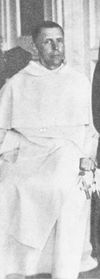
Blessed Jan Franciszek Czartoryski
- September 1 – Krystyna Dąbrowska, Polish sculptor and painter (b. 1906)
- September 2 – Maria Vetulani de Nisau, Polish soldier (b. 1898)
- September 3 - Friedrich Alpers, German Nazi politician and general (b. 1901)
- September 4
- Erich Fellgiebel, German general and resistance fighter (b. 1886)
- Heinrich Graf von Lehndorff-Steinort, German resistance fighter (b. 1909)
- Fritz Thiele, German general and resistance fighter (b. 1894)
- September 5 – Gustave Biéler, Swiss WWII hero (b. 1904)
- September 6 – Jan Franciszek Czartoryski, Polish Dominican friar, martyr and blessed (b. 1897)
- September 7 – Eduardo Sánchez de Fuentes, Cuban composer (b. 1897)
- September 8
- Georg Hansen, German resistance fighter (b. 1904)
- Ulrich von Hassell, German diplomat and resistance fighter (b. 1881)
- Paul Lejeune-Jung, German resistance fighter (b. 1882)
- Ulrich Wilhelm Graf Schwerin von Schwanenfeld, German resistance fighter (b. 1902)
- Günther Smend, German resistance fighter (b. 1912)
- Josef Wirmer, German resistance fighter (b. 1901)
- September 9 – Robert Benoist, French race car driver and war hero (b. 1895)
- September 11 – Joseph Müller, German Roman Catholic priest and Servant of God (executed) (b. 1894)
- September 12 – Robert Fiske, American actor (b. 1889)
- September 13
- Grigore Bălan, Romanian general (died of wounds) (b. 1896)
- Yolande Beekman, French WWII heroine (executed) (b. 1911)
- Madeleine Damerment, French WWII heroine (executed) (b. 1917)
- Noor Inayat Khan, Indian WWII heroine (executed) (b. 1914)
- Eliane Plewman, British WWII heroine (executed) (b. 1917)
- W. Heath Robinson, British cartoonist and illustrator (b. 1872)
- September 14
- Heinrich Graf zu Dohna-Schlobitten, German resistance fighter (executed) (b. 1882)
- John Kenneth Macalister, Canadian WWII hero (b. 1914)
- Michael Graf von Matuschka, German resistance fighter (executed) (b. 1888)
- Frank Pickersgill, Canadian WWII hero (b. 1915)
- Roméo Sabourin, Canadian WWII hero (b. 1923)
- Nikolaus von Üxküll-Gyllenband, German resistance fighter (executed) (b. 1877)
- Hermann Josef Wehrle, German Catholic priest and resistance member (executed) (b. 1899)
- September 16 – Gustav Bauer, 11th Chancellor of Germany (b. 1870)
- September 18
- Hendrikus Colijn, Dutch policeman, politician and businessman, 25th Prime Minister of the Netherlands (b. 1869)
- Anton Saefkow, German communist (executed) (b. 1903)
- September 22 – Fritz Lindemann, German army officer (died of wounds) (b. 1894)
- September 23 – Matylda Palfyova, Czechoslovakian artistic gymnast (b. 1912)
- September 25
- Walter Breisky, Austrian civil servant, acting Chancellor of Austria (b. 1871)
- Eugeniusz Lokajski, Polish athlete, gymnast and photographer (b. 1909)
- Leo Chiozza Money, Italian-British economist and politician (b. 1870)
- September 27
- Aristide Maillol, French sculptor and painter (b. 1861)
- David Dougal Williams, British painter (b. 1888)
- September 28 – Josef Bürckel, German Nazi gauleiter (b. 1895)
- September 29
- Otto Herfurth, German general and resistance fighter (b. 1893)
- Wilhelm Leuschner German politician and resistance fighter (b. 1890)
- Joachim Meichssner, German resistance fighter (b. 1906)
- Joachim Sadrozinski, German resistance fighter (b. 1907)
October
- October 1
- Sir William Mulock, Canadian lawyer, politician and businessman (b. 1843)
- Rudolf Schmundt, German general (b. 1896)
- October 2
- Benjamin Fondane, Romanian-French Symbolist poet, critic and existentialist philosopher (gassed in Auschwitz concentration camp) (b. 1898)
- Julián Felipe, Filipino musician and bandleader (b. 1861)
- Maeda Toshisada, Japanese politician (b. 1874)
- October 4 – Al Smith, American politician (b. 1873)
- October 5 – Prince Gustav of Denmark (b. 1887)
- October 8 – Wendell Willkie, American politician (b. 1892)
- October 9 – Kitty Marion, German-born actress and women's rights activist in England and the United States (b. 1871)
- October 12
- Ramón Castillo, Argentinian politician, 25th President of Argentina (b. 1873)
- Carl Langbehn, German resistance member (b. 1901)
- Rudolf von Marogna-Redwitz, German resistance member (b. 1886)
- October 13
- Hans-Jürgen von Blumenthal, German resistance member (b. 1907)
- Roland von Hößlin, German resistance member (b. 1915)
- October 14 – Erwin Rommel, German field marshal (b. 1891)
- October 17 – Anton Hafner, German aviator (b. 1918)
- October 18
- October 19
- Isadore Bernstein, American screenwriter (b. 1867)
- Deneys Reitz, South African soldier and diplomat (b. 1882)
- October 20
- Eduard Brücklmeier, German diplomat and resistance member (b. 1903)
- Hermann Maaß, German politician and resistance member (b. 1897)
- Adolf Reichwein, German politician and resistance member (b. 1898)
- October 21
- Alois Kayser, German missionary (b. 1877)
- Hilma af Klint, Swedish abstract painter (b. 1862)
- October 22 – Richard Bennett, American actor (b. 1870)
- October 23 – Charles Glover Barkla, British physicist, Nobel Prize laureate (b. 1877)
- October 24
- October 25 - Yukio Seki, Japanese kamikaze pilot (b. 1921)
- October 26
- Princess Beatrice of the United Kingdom, youngest and last surviving child of Queen Victoria (b. 1857)
- Hiroyoshi Nishizawa, Japanese fighter ace (b. 1920)
- José de la Riva-Agüero y Osma, Peruvian historian, writer and politician, 84th Prime Minister of Peru (b. 1885)
- William Temple, Archbishop of Canterbury (b. 1881)
- October 27 – Judith Auer, German World War II resistance fighter (b. 1905)
November
- November 1
- Ismael Pérez Pazmiño, Ecuadoran writer (b. 1876)
- Andrey Sheptytsky, Soviet Eastern Catholic archbishop and venerable (b. 1865)
- November 2
- Karol Irzykowski, Polish writer (b. 1873)
- Thomas Midgley, Jr., American chemist and inventor (b. 1889)
- November 4 – Sir John Dill, Field Marshal of the British Army (b. 1881)
- November 5 – Alexis Carrel, French surgeon and biologist, recipient of the Nobel Prize in Physiology or Medicine (b. 1873)
- November 7
- Max Bergmann, German biochemist (b. 1886)
- Richard Sorge, Soviet spy, executed (b. 1895)
- Hannah Szenes, Hungarian World War II heroine, poet, executed (b. 1921)
- November 8 – Jane Grey, American actress (b. 1883)
- November 10
- Wang Jingwei, Chinese statesman, President of the Nanjing-based and Japanese-supported collaborationist Government of the Republic of China (b. 1883)
- Friedrich Werner von der Schulenburg, German diplomat and resistance member (b. 1875)
- November 12 – George F. Houston, American actor (b. 1896)
- November 13
- Carl Lampert, Austrian Roman Catholic priest and blessed (b. 1894)
- Friedrich Lorenz, German Roman Catholic priest and blessed (b. 1897)
- November 14
- Walter Cramer, German resistance member (b. 1886)
- Trafford Leigh-Mallory, British aviator and Royal Air Force Air Chief Marshal (b. 1892)
- Bernhard Letterhaus, German trade unionist and resistance member (b. 1894)
- Ferdinand von Lüninck, German politician and resistance member (b. 1888)
- November 16 – Maria Rodziewiczówna, Polish writer (b. 1863)
- November 19 – Ignacio Bolívar, Spanish naturalist and entomologist (b. 1850)
- November 22
- Joseph Caillaux, French politician, 57th Prime Minister of France (b. 1863)
- Arthur Eddington, British astronomer, physicist and mathematician (b. 1882)
- Johan Pitka, Estonian entrepreneur, sea captain, and admiral (b. 1872)
- November 25 – Kenesaw Mountain Landis, 1st commissioner of Major League Baseball (b. 1866)
- November 26 – Florence Foster Jenkins, American socialite and singer (b. 1868)
- November 30 – Lilo Gloeden, German resistance member (b. 1903)
December
- December 1 – Franciszek Pius Radziwiłł, Polish nobleman and activist (b. 1878)
- December 2
- Filippo Tommaso Marinetti, Italian poet, editor and art theorist, founder of the Futurist movement (b. 1876)
- Josef Lhévinne, Soviet pianist (b. 1874)
- December 3 – Prince Andrew of Greece and Denmark (b. 1882)
- December 4 – Roger Bresnahan, American baseball player and member of the MLB Hall of Fame (b. 1879)
- December 9 – Laird Cregar, American actor (b. 1913)
- December 11 – Montgomery Cunningham Meigs, American WWII hero (b. 1919)
- December 12 – Bernard Chrzanowski, Polish activist (b. 1861)
- December 13 – Wassily Kandinsky, Russian-born Polish artist (b. 1866)
- December 14 – Lupe Vélez, Mexican actress (b. 1908)
- December 15 – Glenn Miller, American band leader (accident) (b. 1904)
- December 19 – King Abbas II of Egypt (b. 1874)
- December 20
- Caesar von Hofacker, German resistance member (b. 1896)
- Carl Wentzel, German resistance member (b. 1875)
- December 22 – Harry Langdon, American comedian (b. 1884)
- December 26 – George Bellamy, British actor (b. 1866)
- December 27 – Sára Salkaházi, Hungarian Roman Catholic religious sister and blessed (b. 1899)
- December 30 – Romain Rolland, French writer, Nobel Prize laureate (b. 1866)
- December 31
- Vicente Lim, Filipino general of the Armed Forces of the Philippines (b. 1889)
- Ruth Hanna McCormick, American politician, activist and publisher (b. 1880)
Nobel Prizes
- Physics – Isidor Isaac Rabi
- Chemistry – Otto Hahn[48]
- Medicine – Joseph Erlanger, Herbert Spencer Gasser
- Literature – Johannes V. Jensen
- Peace – International Committee of the Red Cross
References
- ^ Ford, Ken (2004). Cassino 1944: Breaking the Gustav Line. Oxford: Osprey. p. 12. ISBN 978-1-84176-623-2.
- ^ "ГЛАВА XXXVIII. ВОССТАНИЕ ПУШТУНСКИХ ПЛЕМЕН 1944 -1945 ГГ. В". scibook.net. Retrieved April 29, 2020.
- ^ "Convoy Mo-Ta-06 (モタ61船団)" (PDF). All Japan Seamen's Union. Retrieved November 18, 2011.
- ^ a b "Greatest Maritime Disasters". International Registry of Sunken Ships. Retrieved December 6, 2010.
- ^ "More Maritime Disasters of World War II". George Duncan. Archived from the original on April 4, 2011. Retrieved December 6, 2010.
- ^ a b "List of sunken ships in Pacific War (太平洋戦争時の喪失船舶明細表)" (PDF). Sunken Ships Record Association (戦没船を記録する会). Archived from the original (PDF) on December 2, 2013. Retrieved October 20, 2012.
- ^ Kynaston, David (2007). Austerity Britain 1945–1951. London: Bloomsbury. ISBN 978-0-7475-7985-4.
- ^ fr:Semaine rouge (Rouen)
- ^ "Convoy Take Ichi" (PDF). All Japan Seamen's Union. Retrieved November 17, 2011.
- ^ Small, Ken; Rogerson, Mark (1988). The Forgotten Dead – Why 946 American Servicemen Died off the Coast of Devon in 1944 – and the Man who Discovered their True Story. London: Bloomsbury. ISBN 978-0-7475-0309-5.
- ^ Fenton, Ben (April 26, 2004). "The disaster that could have scuppered Overlord". The Daily Telegraph. London.
- ^ Savill, Richard (April 26, 2004). "Last of torpedo survivors remembers brave buddies". The Daily Telegraph.
- ^ Wasley, Gerald (1994). Devon at War, 1939–1945. Tiverton: Devon Books. p. 157. ISBN 978-0-86114-885-1.
- ^ a b "Year by Year 1944" – History Channel International
- ^ Kaiser, Don (2011). "K-Ships Across the Atlantic" (PDF). Naval Aviation News. 93 (2). Retrieved September 23, 2011.
- ^ Asperger, H. (1991) [1944]. "'Autistic psychopathy' in childhood". In Frith, Uta (ed.). Autism and Asperger Syndrome. Cambridge University Press. pp. 37–92. ISBN 978-0-521-38448-3.
- ^ Asperger, Hans (June 3, 1944). "Die "Autistischen Psychopathen" im Kindesalter". Archiv für Psychiatrie und Nervenkrankheiten. 117 (1): 76–136. doi:10.1007/BF01837709. S2CID 33674869.
- ^ Foot, M. R. D. (1999). SOE: An Outline History of the Special Operations Executive 1940–46. London: Pimlico. p. 143. ISBN 978-0-7126-6585-8.
- ^ Stourton, Edward (2017). Auntie's War: the BBC during the Second World War. London: Doubleday. ISBN 978-0-857-52332-7.
- ^ a b c d Penguin Pocket On This Day. Penguin Reference Library. 2006. ISBN 978-0-14-102715-9.
- ^ Neufeld, Michael J. (1995). The Rocket and the Reich: Peenemünde and the Coming of the Ballistic Missile Era. New York: The Free Press. pp. 158, 160–162, 190.
- ^ "Nikkin Maru - Casualties (日錦丸の被害)" (PDF). All Japan Seamen's Union. Retrieved November 18, 2011.
- ^ 56 F. Supp. 716 (N.D. Cal 1944).
- ^ Radinger, Will; Schick, Walter (1996). Me 262 (in German). Berlin: Avantic Verlag GmbH. ISBN 978-3-925505-21-8.
- ^ Kennedy, Liam (2013). Ulster Since 1600: Politics, Economy, and Society. Oxford University Press. p. 221. ISBN 9780199583119.
- ^ Prose, Francine (August 1, 2014). "Anne Frank's final entry". CNN. Retrieved August 1, 2014.
On Friday, August 4, 1944... a car pulled up in front of a spice warehouse at 263 Prinsengracht in Amsterdam. Inside the car were an Austrian Gestapo officer and his Dutch subordinates, who, acting on a tip-off (whose source has never been identified), had come to arrest the eight Jews who had been hiding for two years in an attic above the warehouse. The eight prisoners were taken to a deportation camp, from where they were sent to Auschwitz. Only one of them, Otto Frank, would survive.
- ^ Cressman, Robert J. (2000). The Official Chronology of the U.S. Navy in WWII. Annapolis, Maryland: Naval Institute Press. p. 248. ISBN 978-1-55750-149-3.
- ^ "Convoy Hi-71 (ヒ71船団)" (PDF). All Japan Seamen's Union. Retrieved November 17, 2011.
- ^ Van der Zee, Henri A. (1982). The Hunger Winter: Occupied Holland 1944–5. London: Norman & Hobhouse. ISBN 978-0-906908-71-6.
- ^ van der Kuil, Peter (March 2003). "List of Casualties". The Sinking of the Junyo Maru. Archived from the original on March 12, 2012.
- ^ Larsen, Henry A. (1967). The Big Ship: an autobiography. Toronto: McClelland and Stewart.
- ^ "Across the Northwest Passage: The Larsen Expeditions". University of Calgary. Retrieved December 17, 2012.
- ^ "Antwerp, "City of Sudden Death"". V2Rocket.com. Retrieved April 24, 2013.
- ^ Fuller, John F. C. (1956). The Decisive Battles of the Western World. III. London: Eyre & Spottiswoode.
- ^ Morison, Samuel E. (1956). "Leyte, June 1944–January 1945". History of United States Naval Operations in World War II. XII. Boston: Little & Brown.
- ^ Gile, Chester A. (February 1963). "The Mount Hood Explosion". Proceedings.
- ^ a b "Convoy Hi-81 (ヒ81船団)" (PDF). All Japan Seamen's Union. Retrieved November 17, 2011.
- ^ As does Kenneth Branagh reprising the role over forty years later in his successful remake.
- ^ Reed, John (1977). "Largest Wartime Explosions: 21 Maintenance Unit, RAF Fauld, Staffs. November 27, 1944". After the Battle. 18: 35–40. ISSN 0306-154X.
- ^ Cressman, Robert J. (2000). The Official Chronology of the U.S. Navy in WWII. Annapolis, Maryland: Naval Institute Press. p. 278. ISBN 978-1-55750-149-3.
- ^ "The Sinking of SS Leopoldville". uboat.net. Retrieved July 4, 2010.
- ^ Palmer, Alan; Veronica (1992). The Chronology of British History. London: Century Ltd. pp. 392–394. ISBN 978-0-7126-5616-0.
- ^ "Battle of Britain". ww2db.com. Retrieved May 16, 2016.
- ^ Guggisberg, Charles Albert Walter (1961). Simba: the life of the lion. Cape Town: Howard Timmins.
- ^ "BC Zalgiris Kaunas basketball team". Retrieved April 24, 2019.
- ^ Bob Wechsler (2008). Day by Day in Jewish Sports History
- ^ "Biografía de Angelica Maria" [Biography of Angelica Maria]. Buena Musica (in Spanish).
- ^ "6 Women Scientists Who Were Snubbed Due to Sexism". National Geographic News. May 19, 2013. Retrieved January 19, 2021.
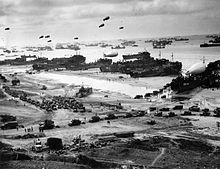





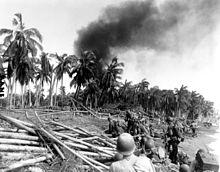
_1944_10_24_1.jpg)

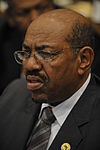
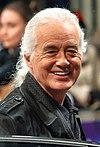


.jpg)

%2c_London%2c_2012.jpg)





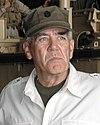
.jpg)





.jpg)

_2018-02-11_15-35-40_ILCE-6500_DSC07150_(31235662177)_(cropped).jpg)



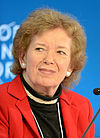
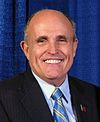

.jpg)
.jpg)

_cropped.jpg)


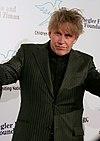


.jpg)

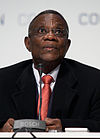

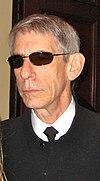
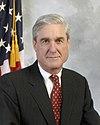
_(cropped).jpg)

.jpg)
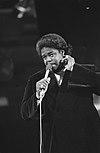

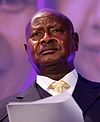












.jpg)
.jpg)
.jpg)
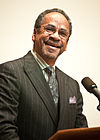

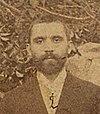

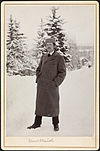

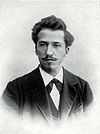
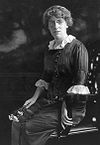
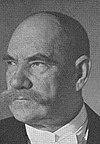
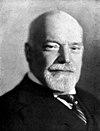
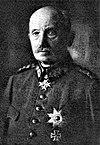
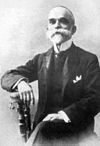
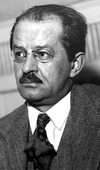
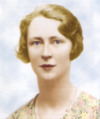
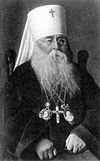
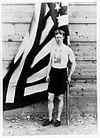
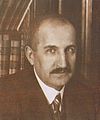

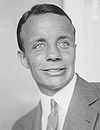

.jpg)
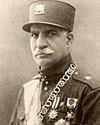
.jpg)
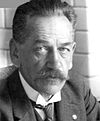
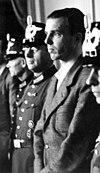

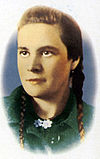
.jpg)
.jpg)

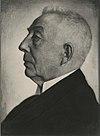
.jpg)
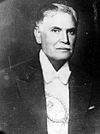
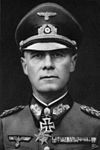
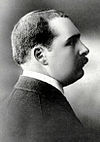
.jpg)
.jpg)
